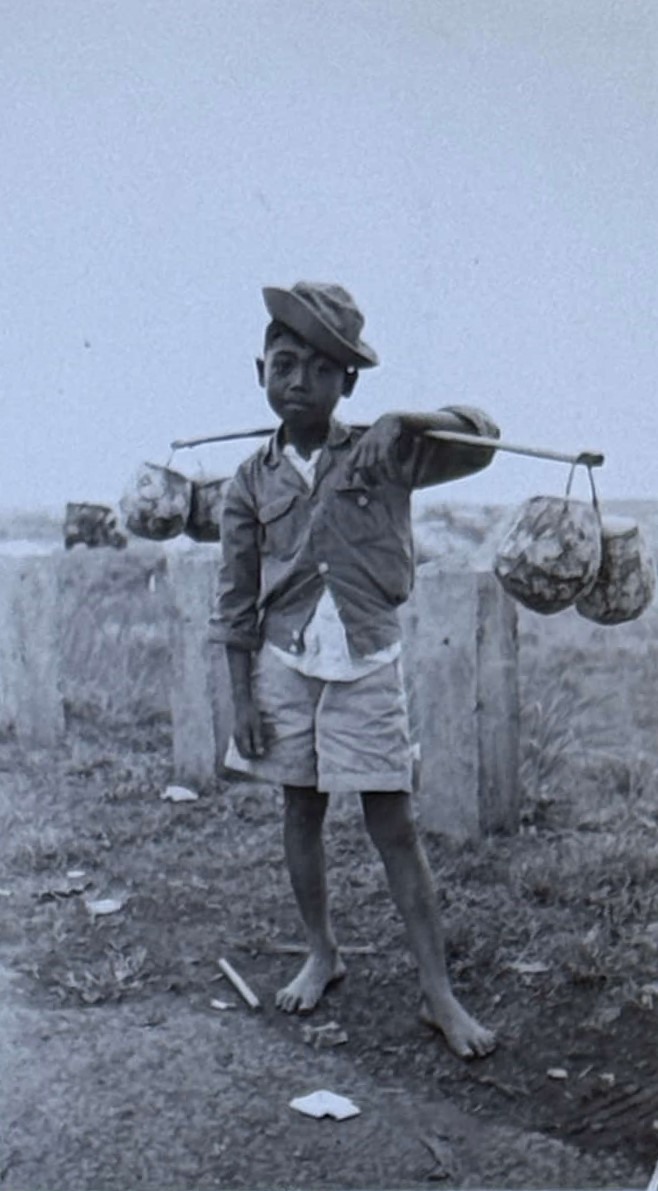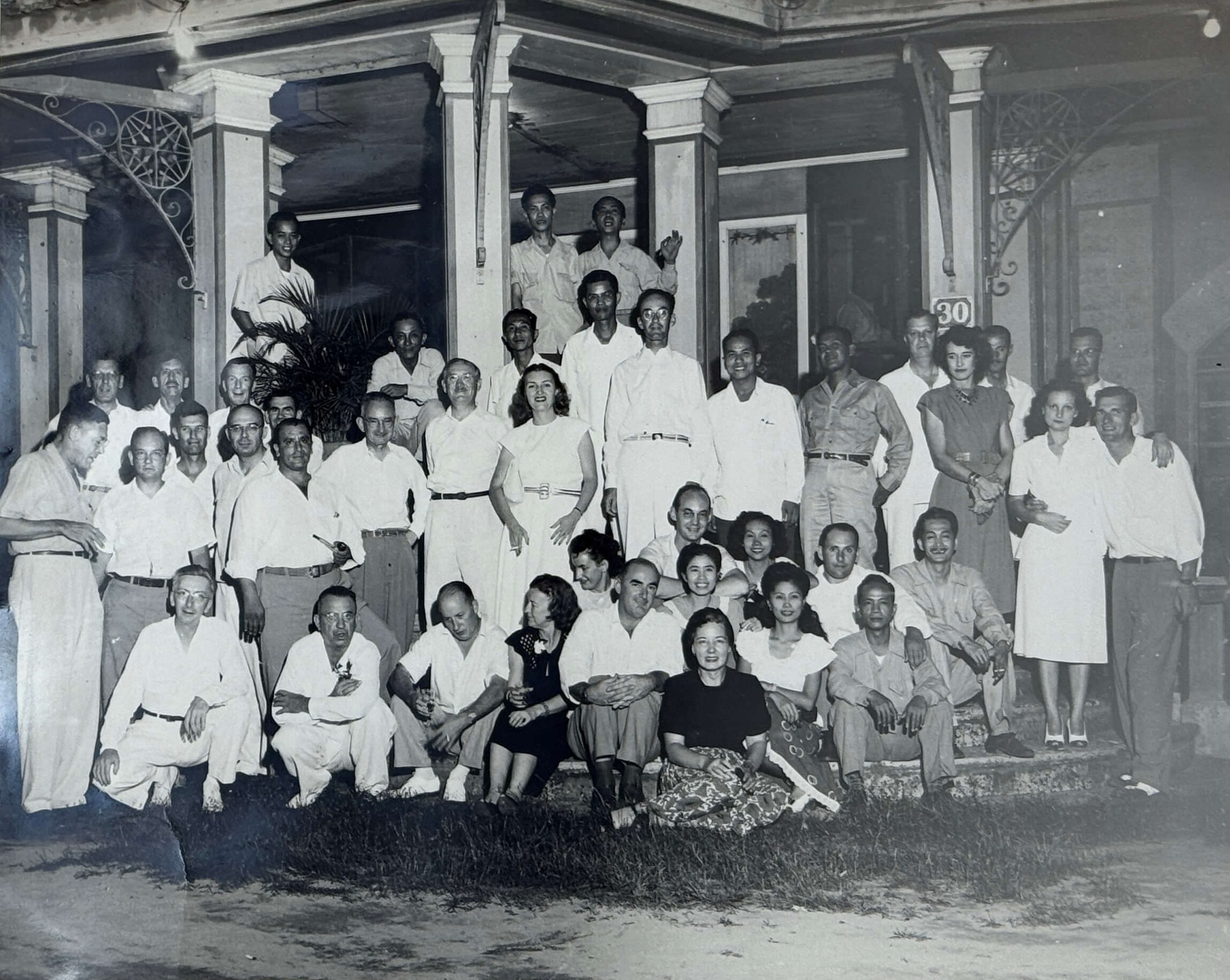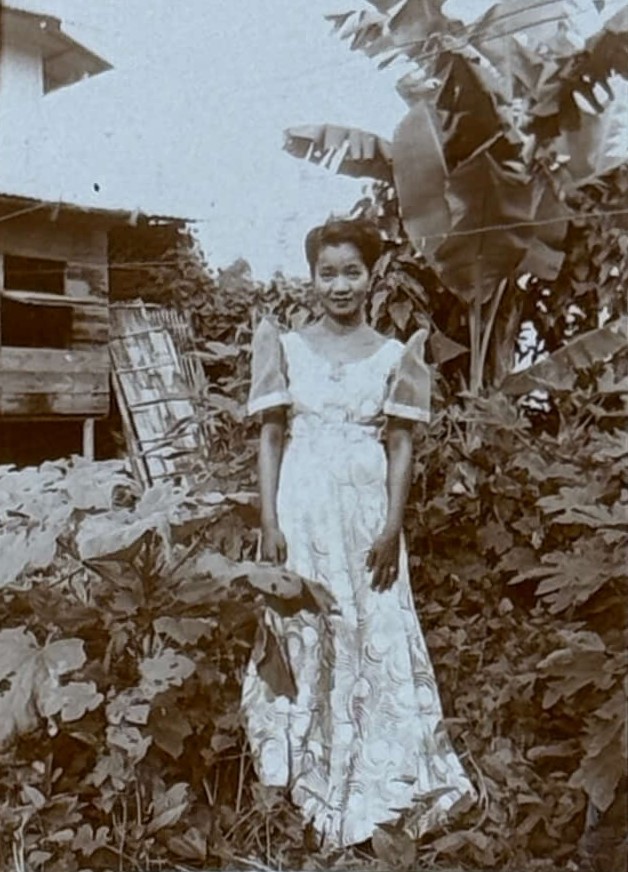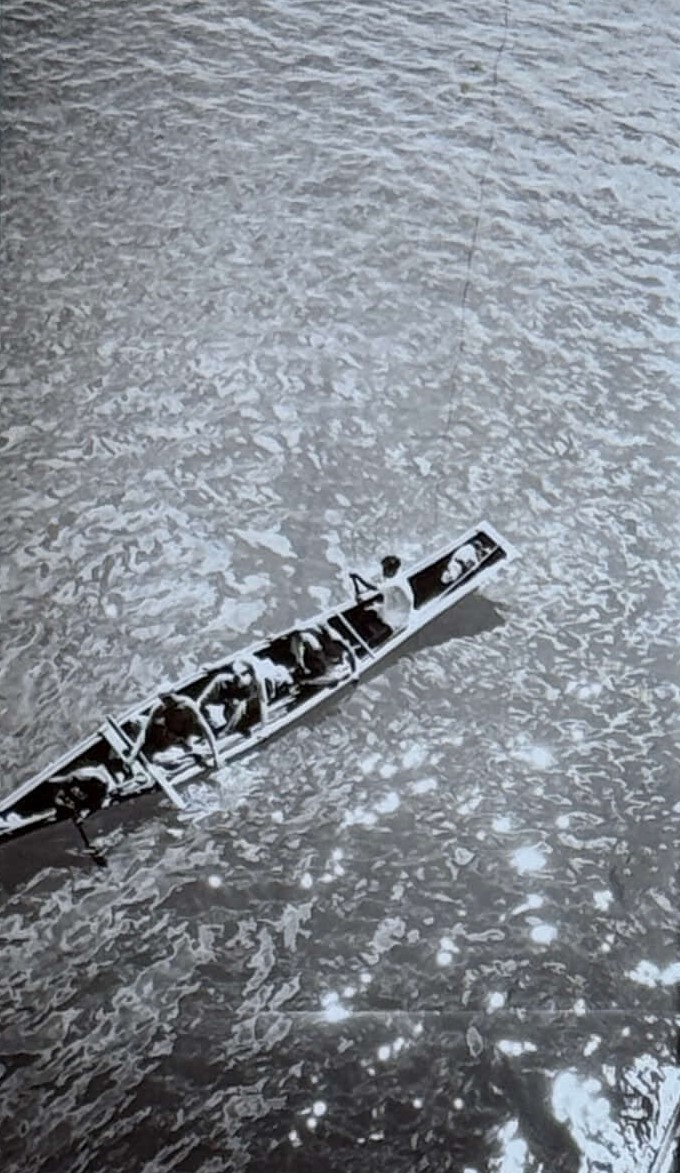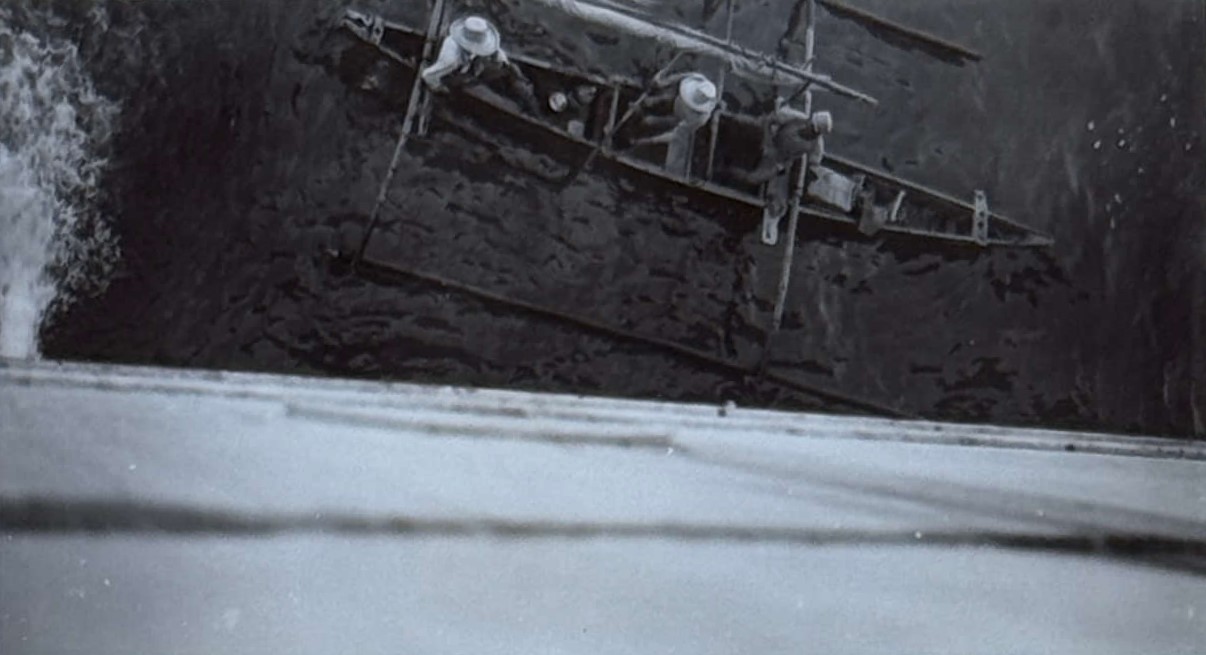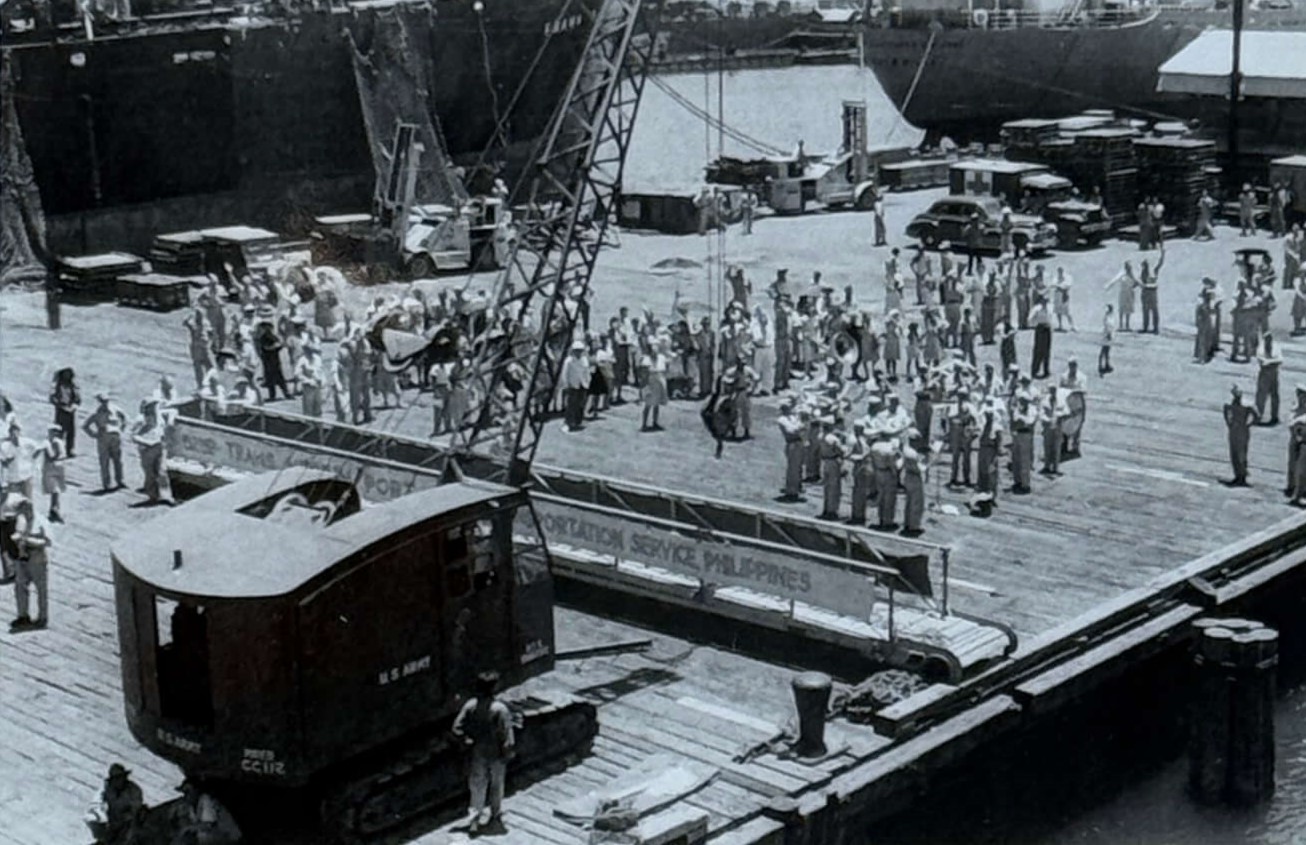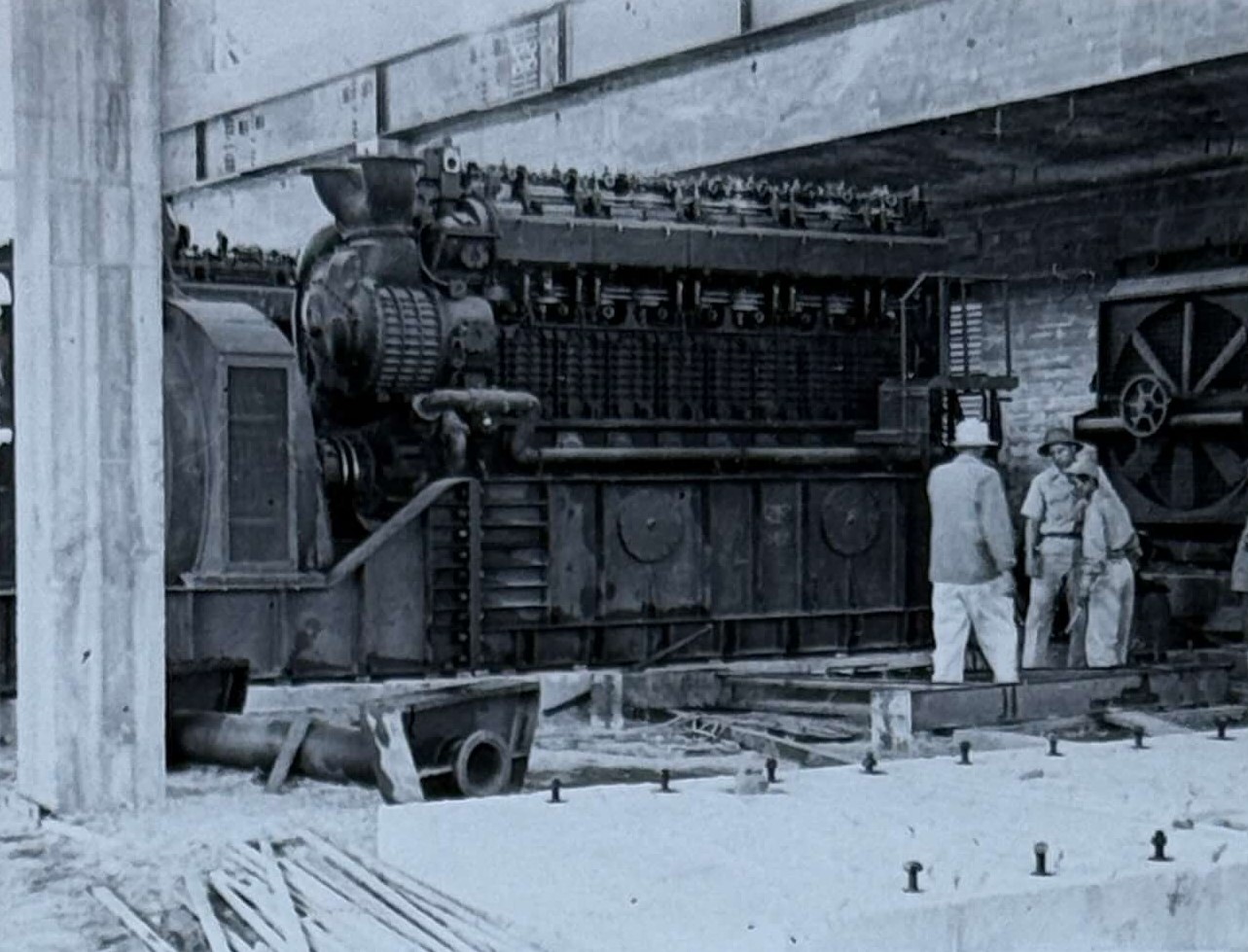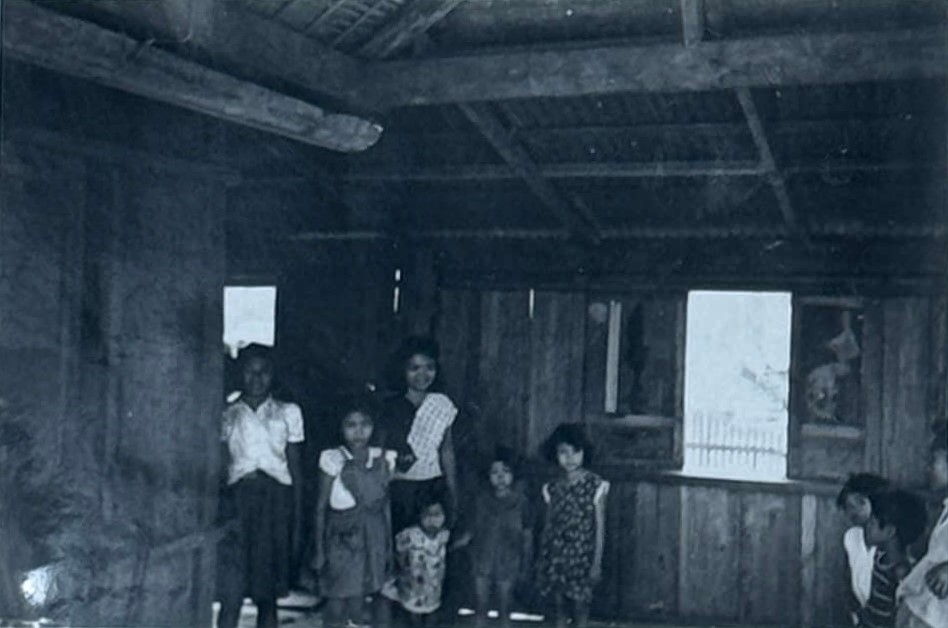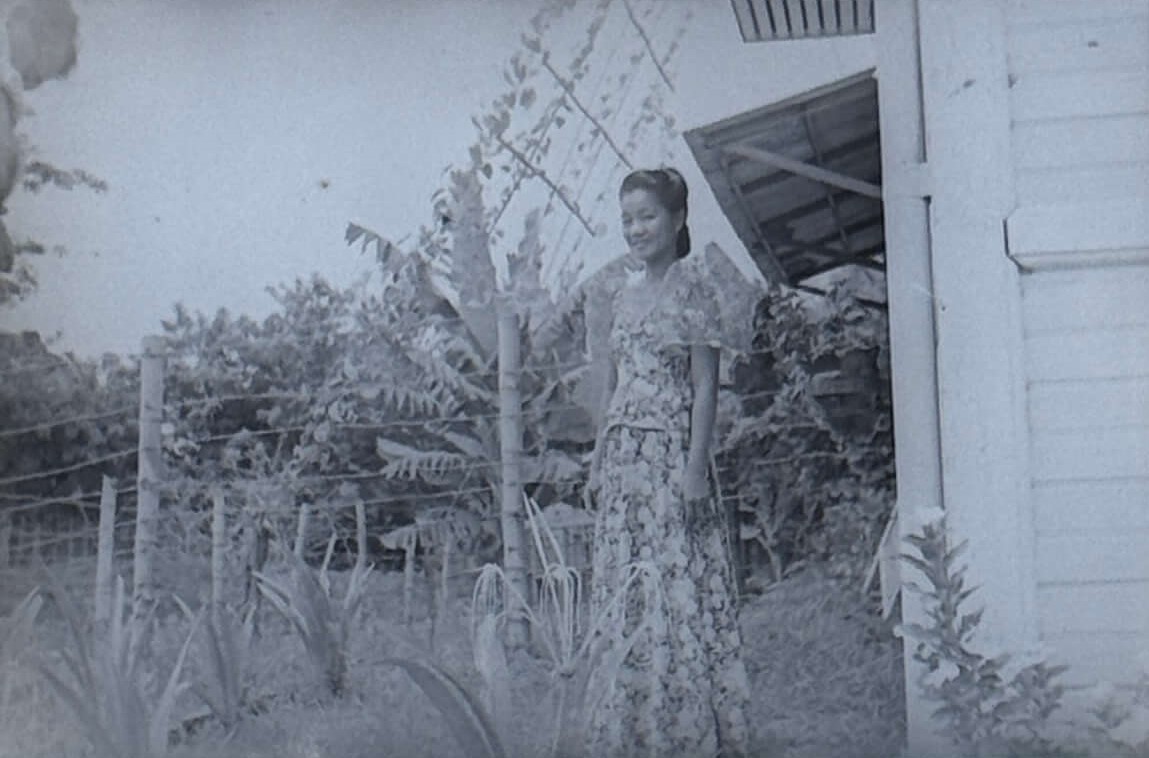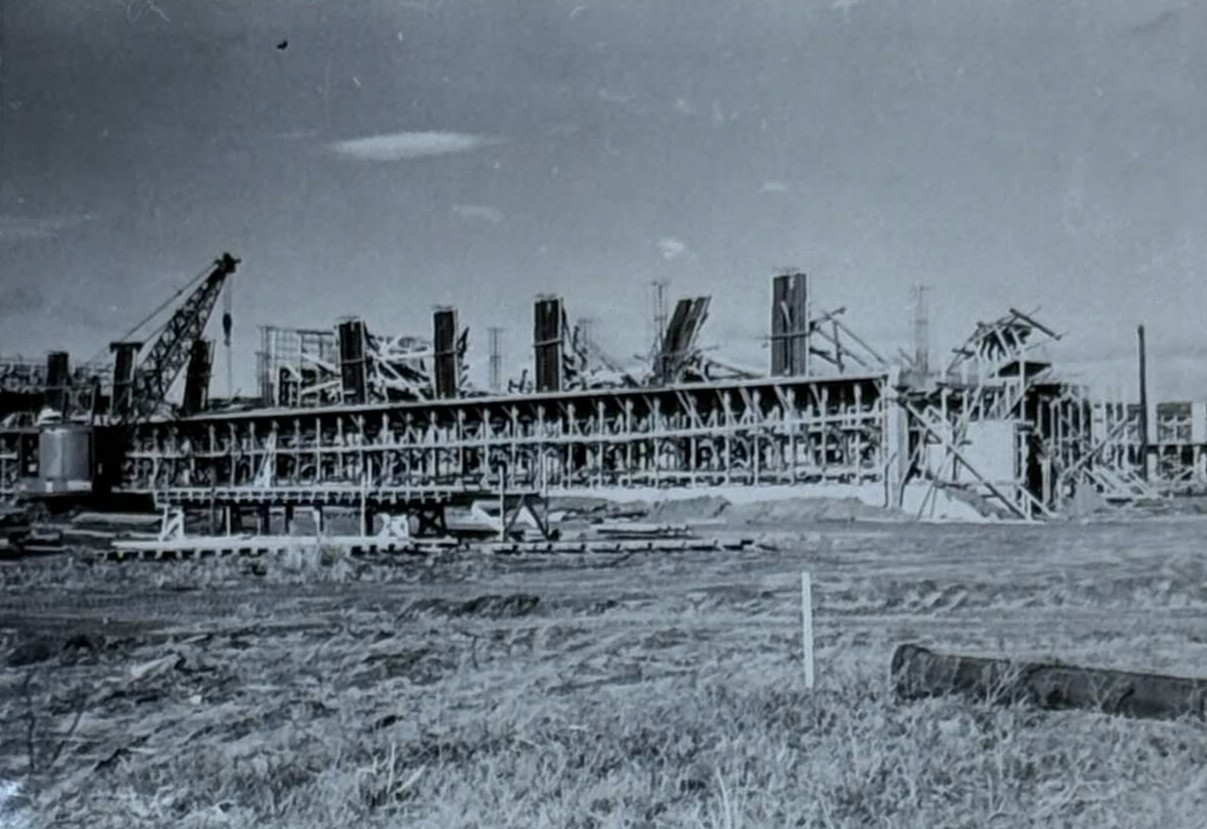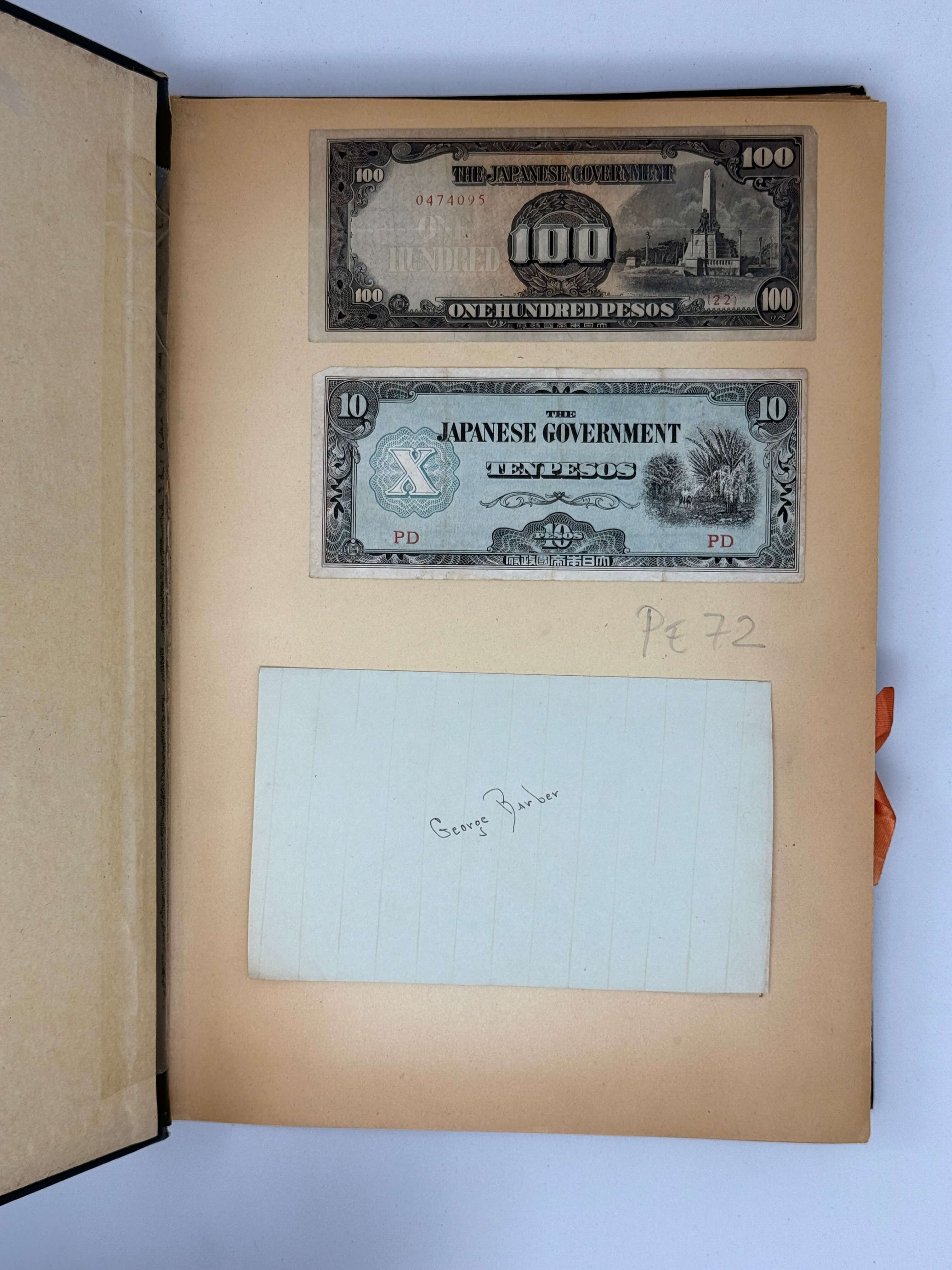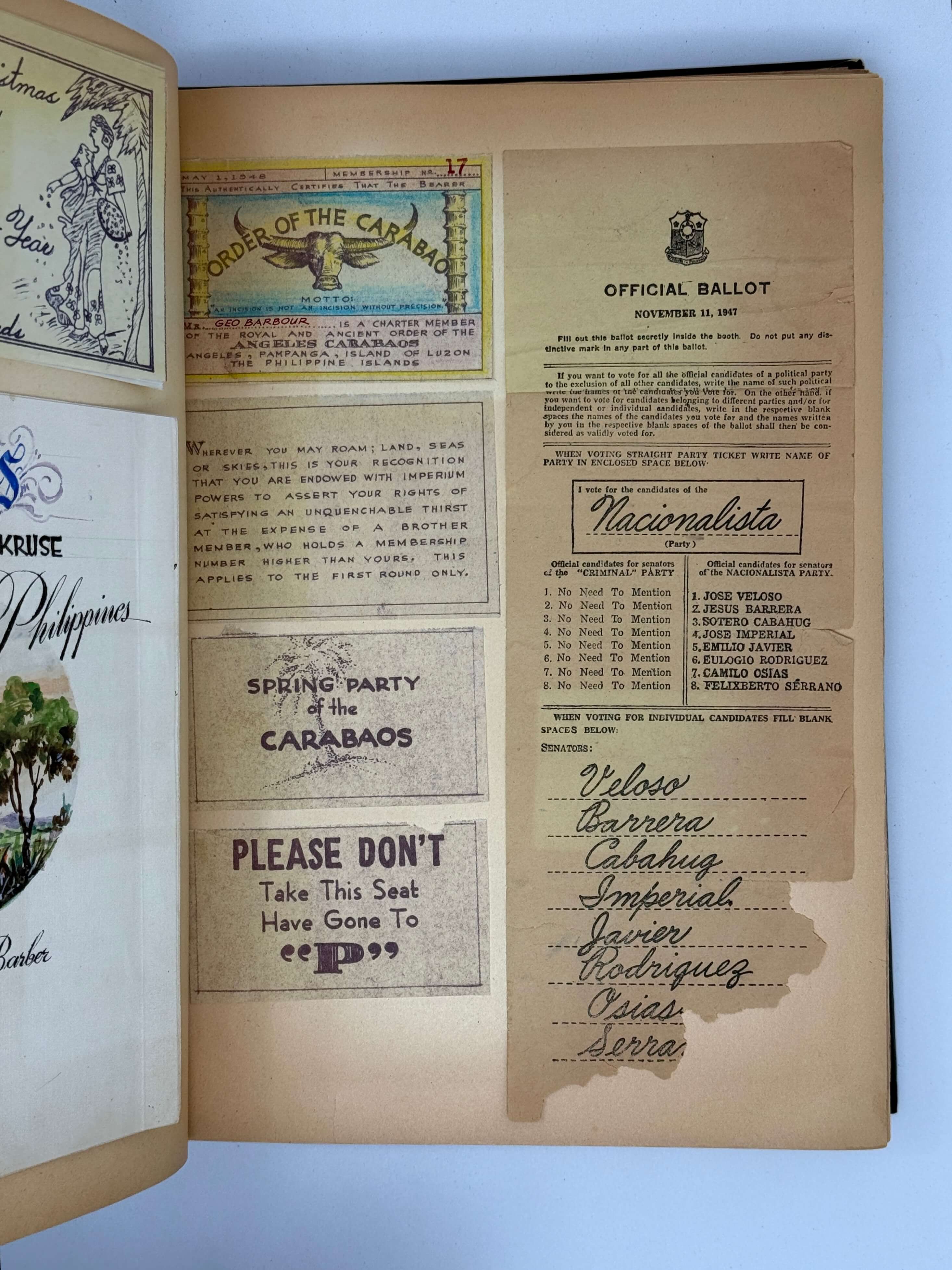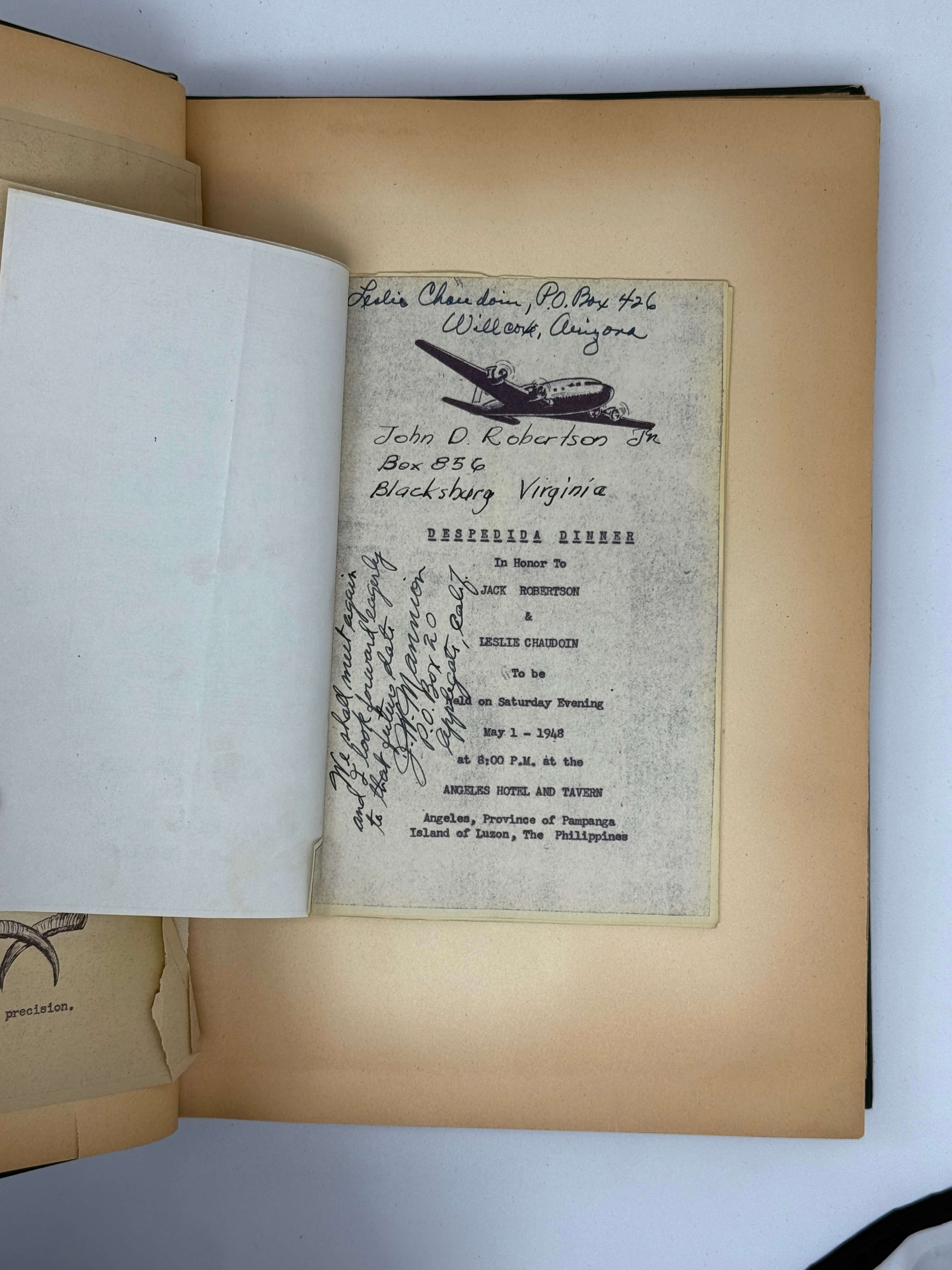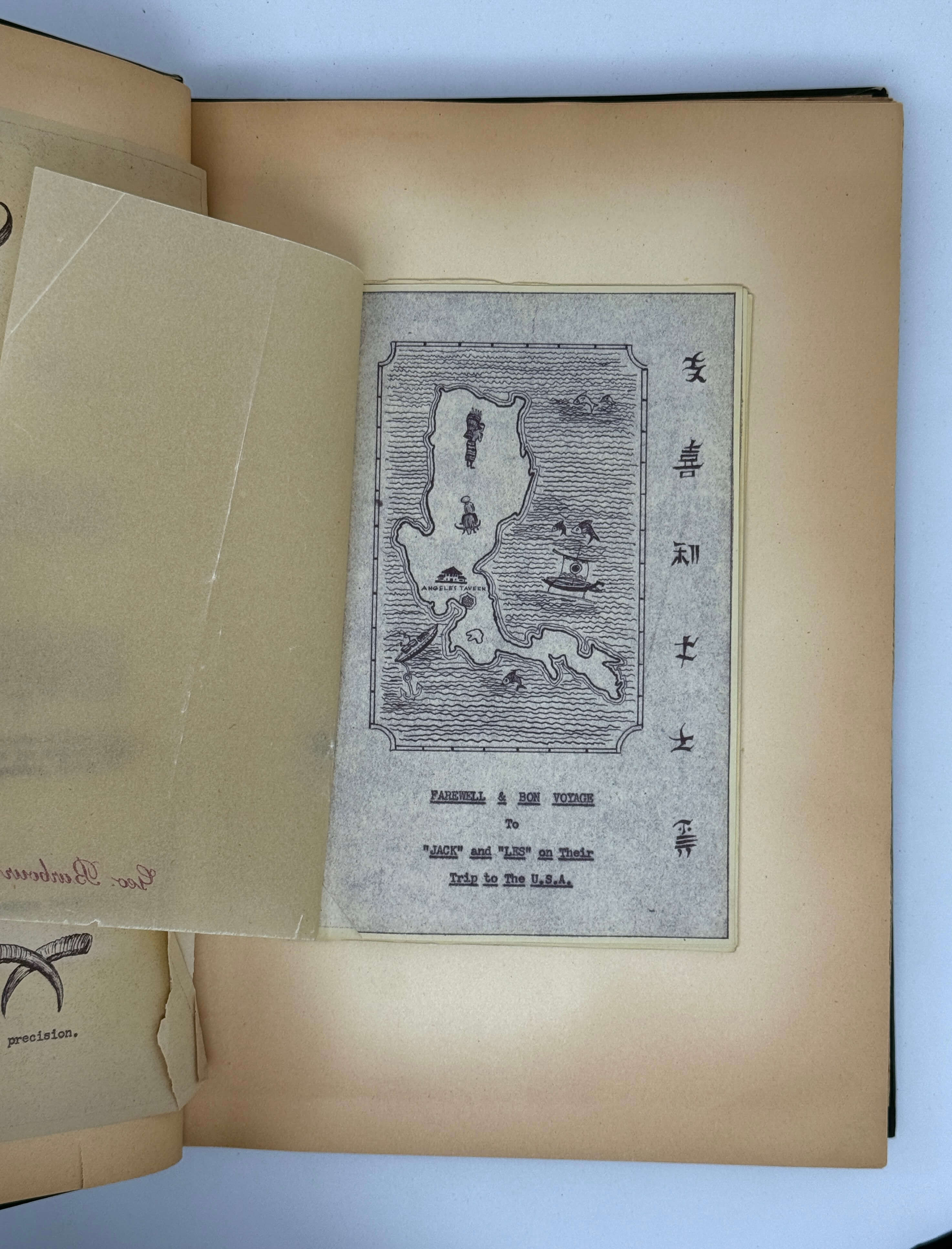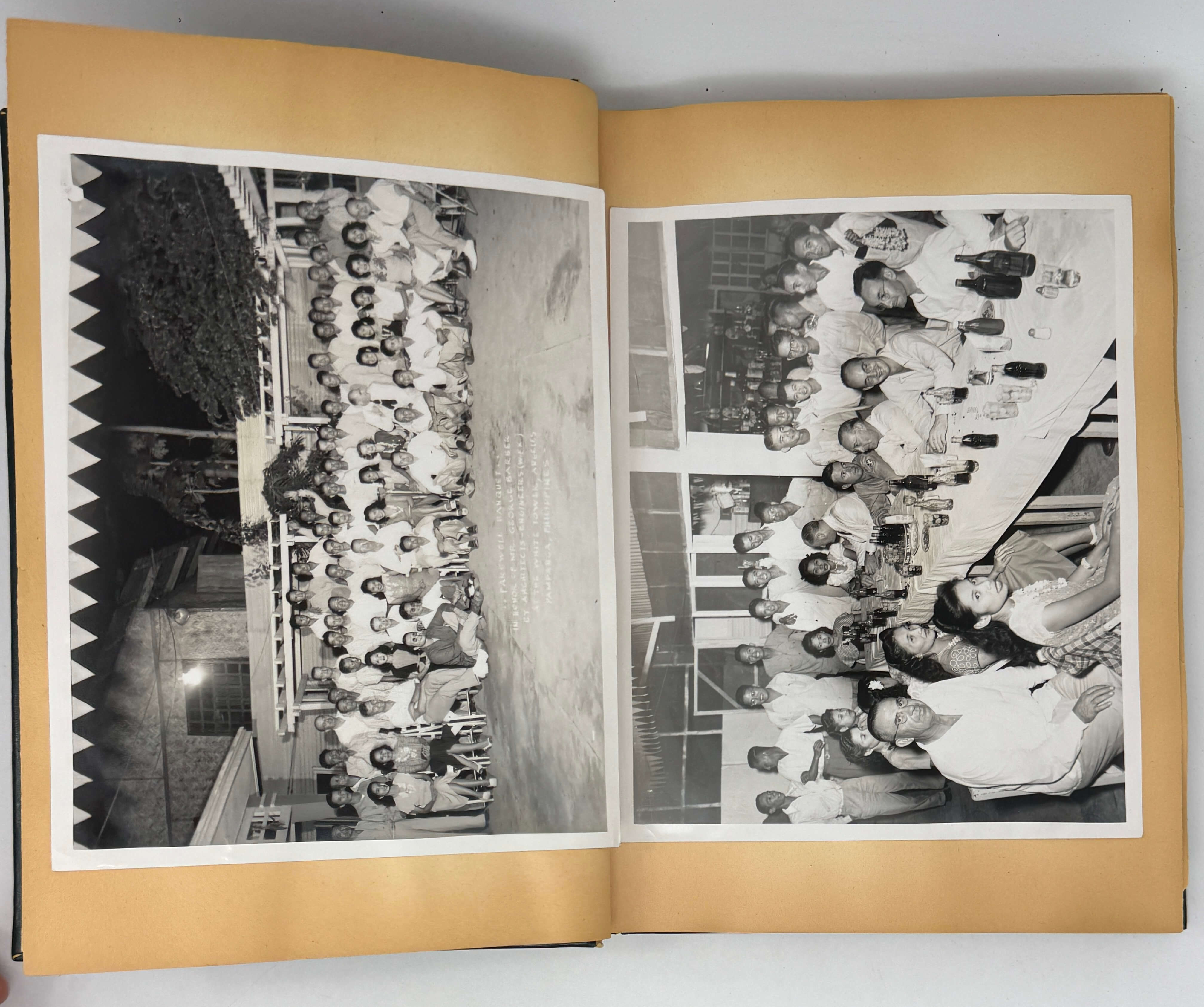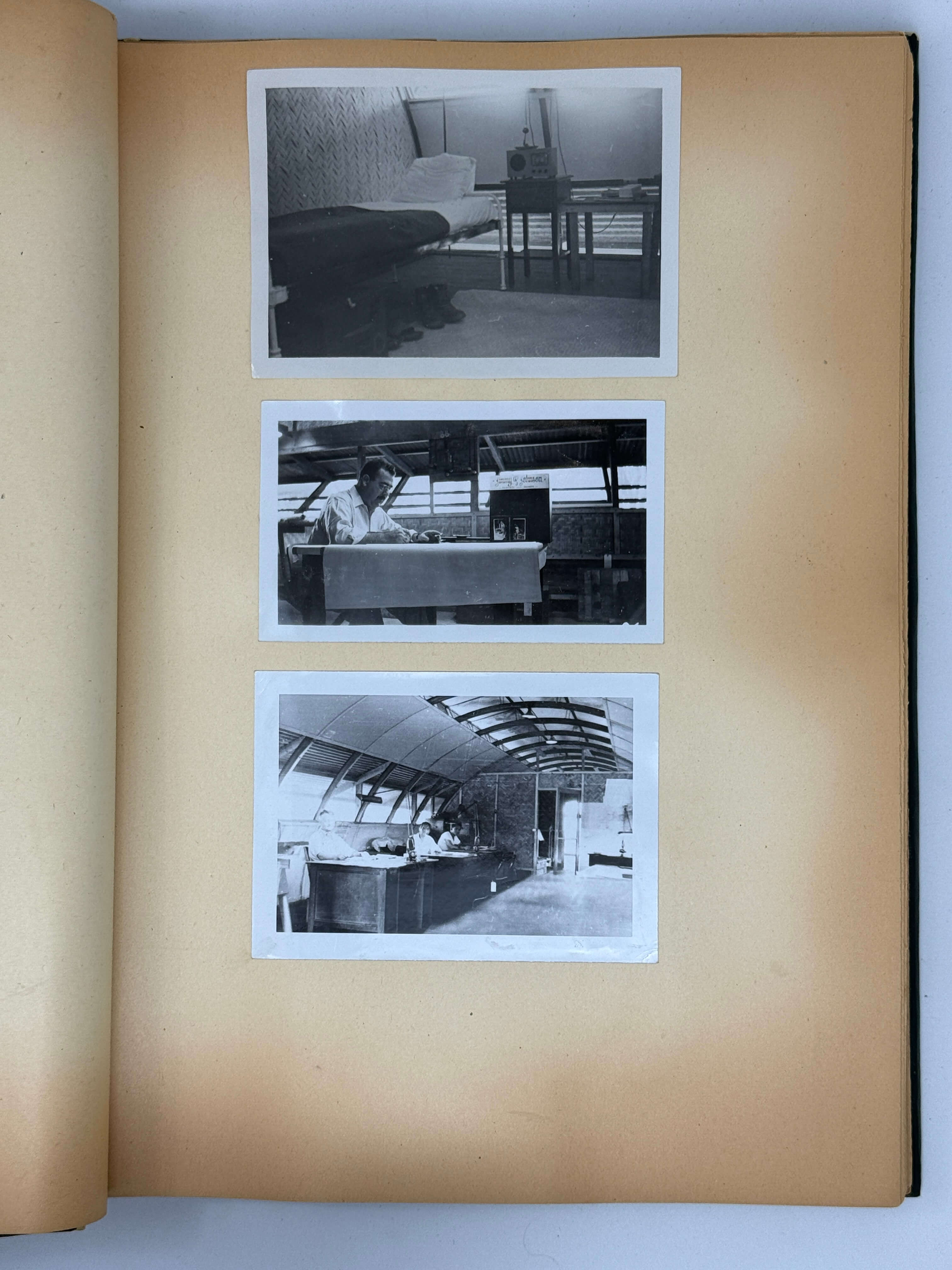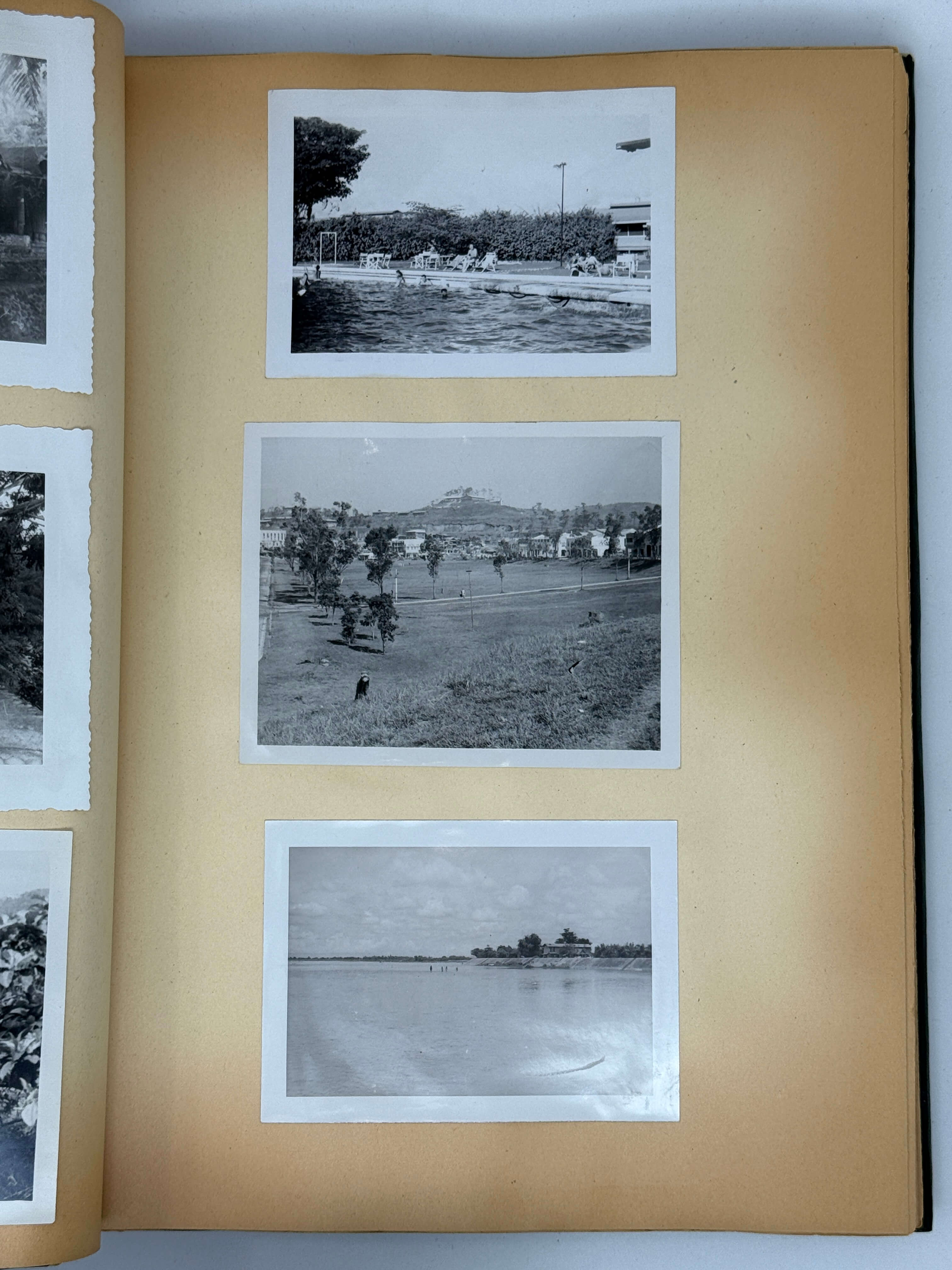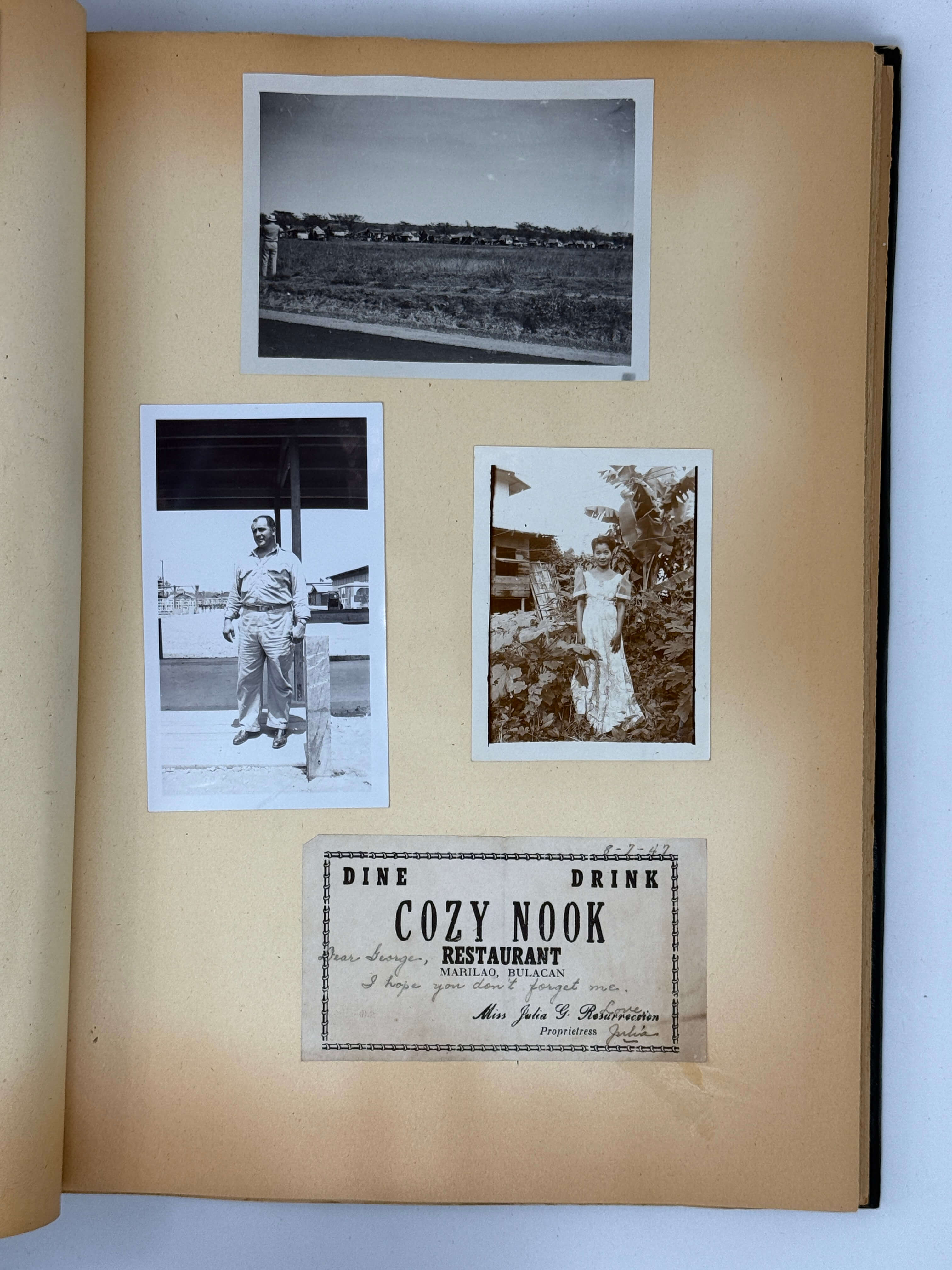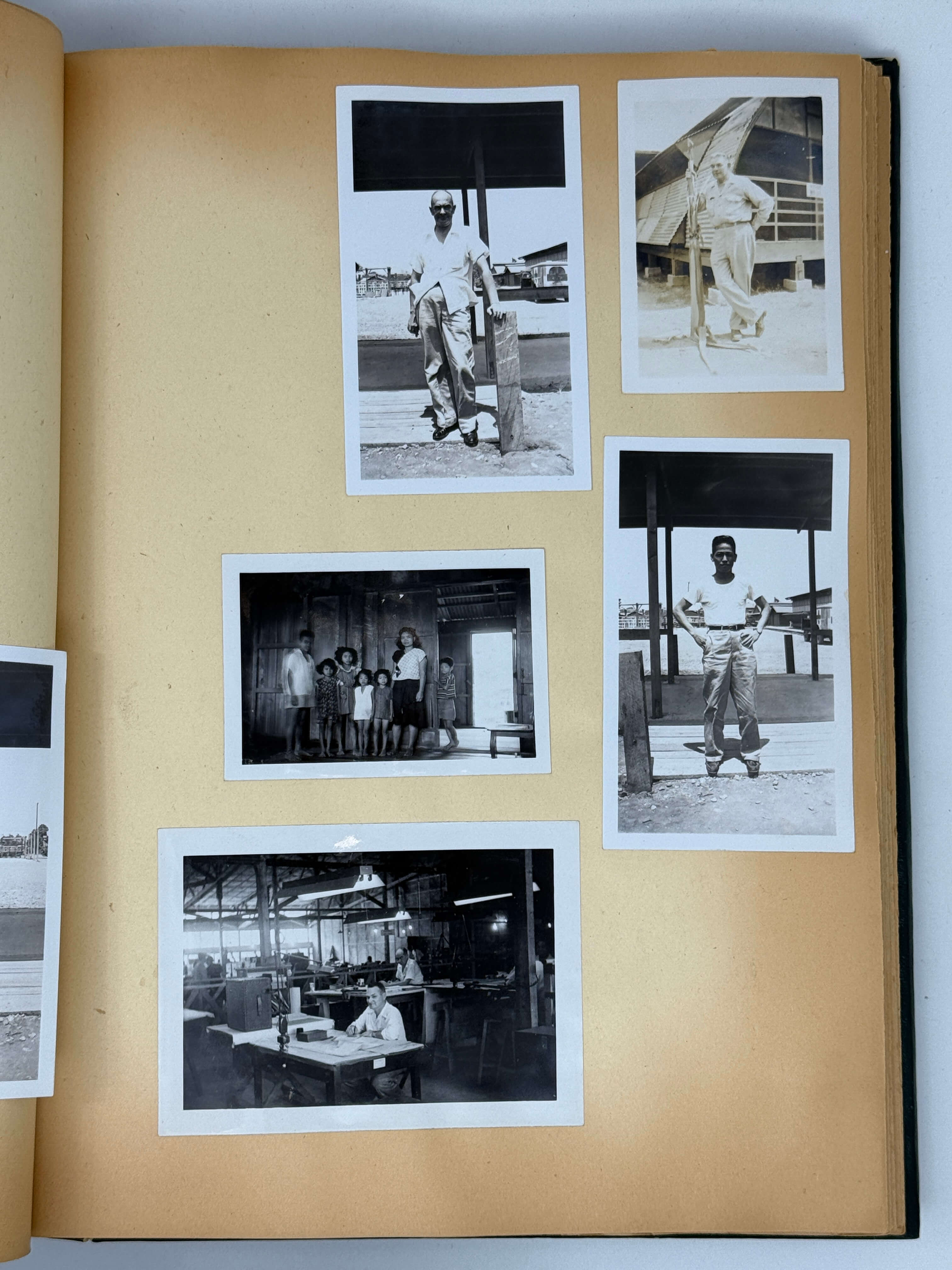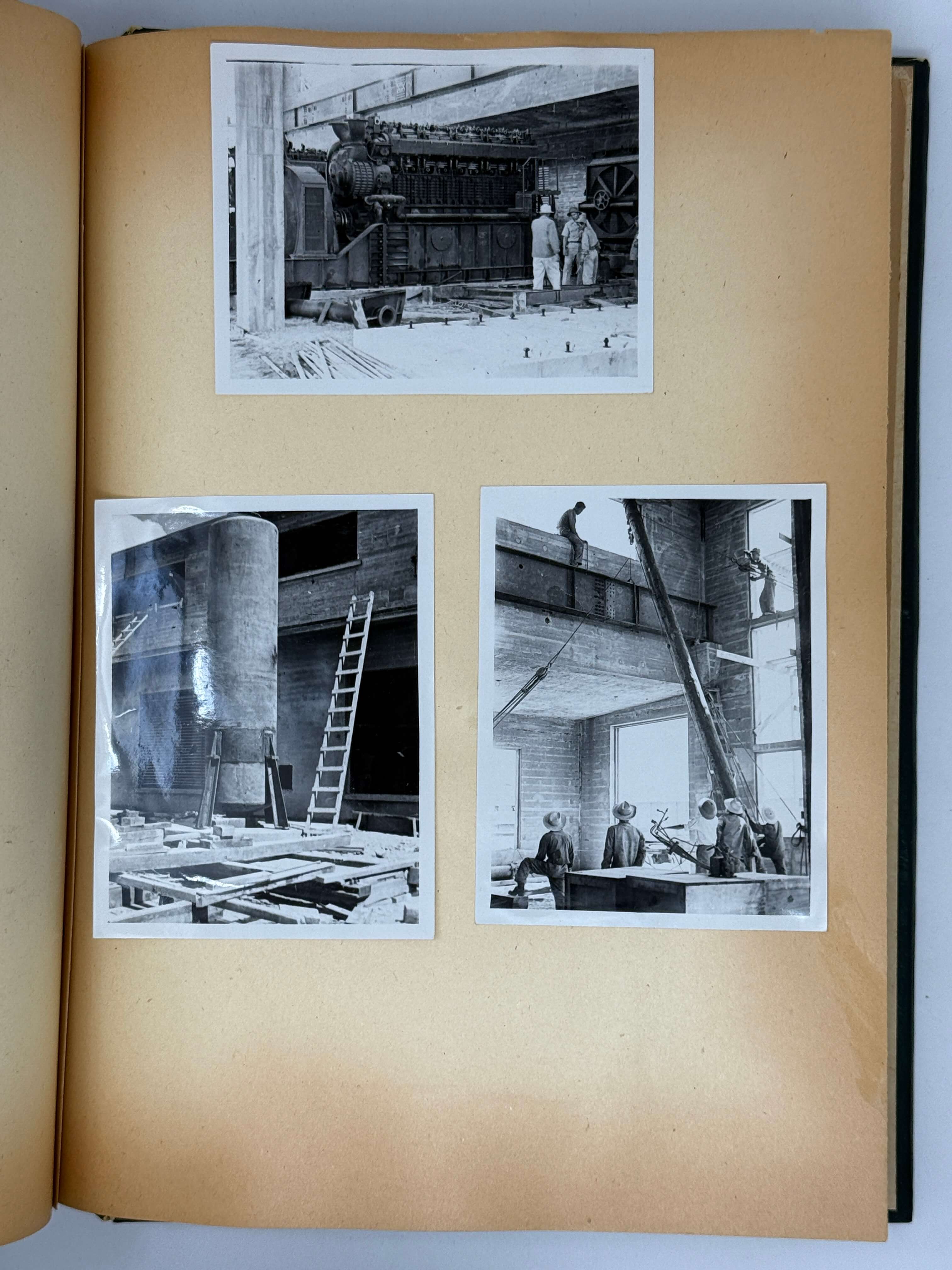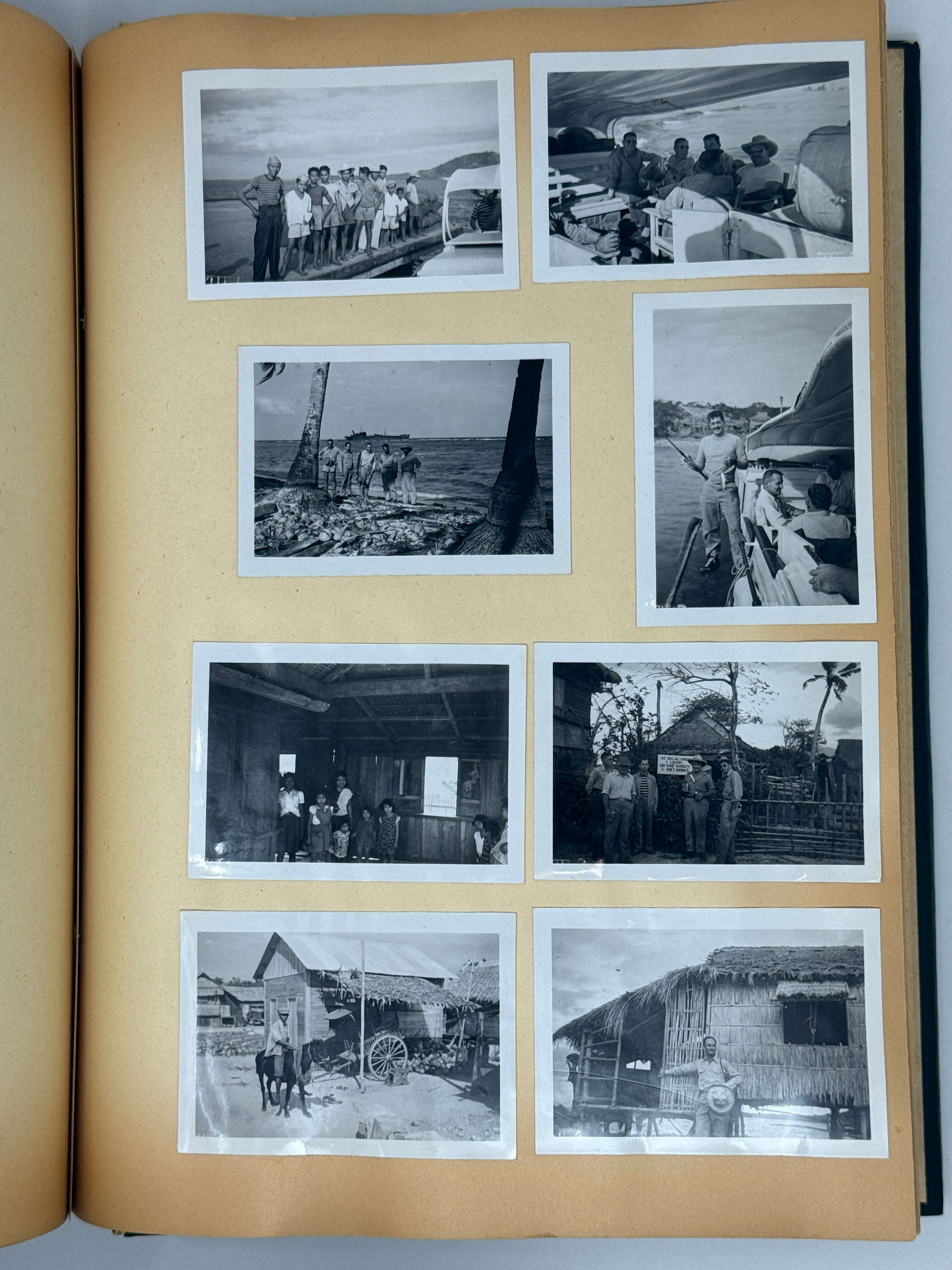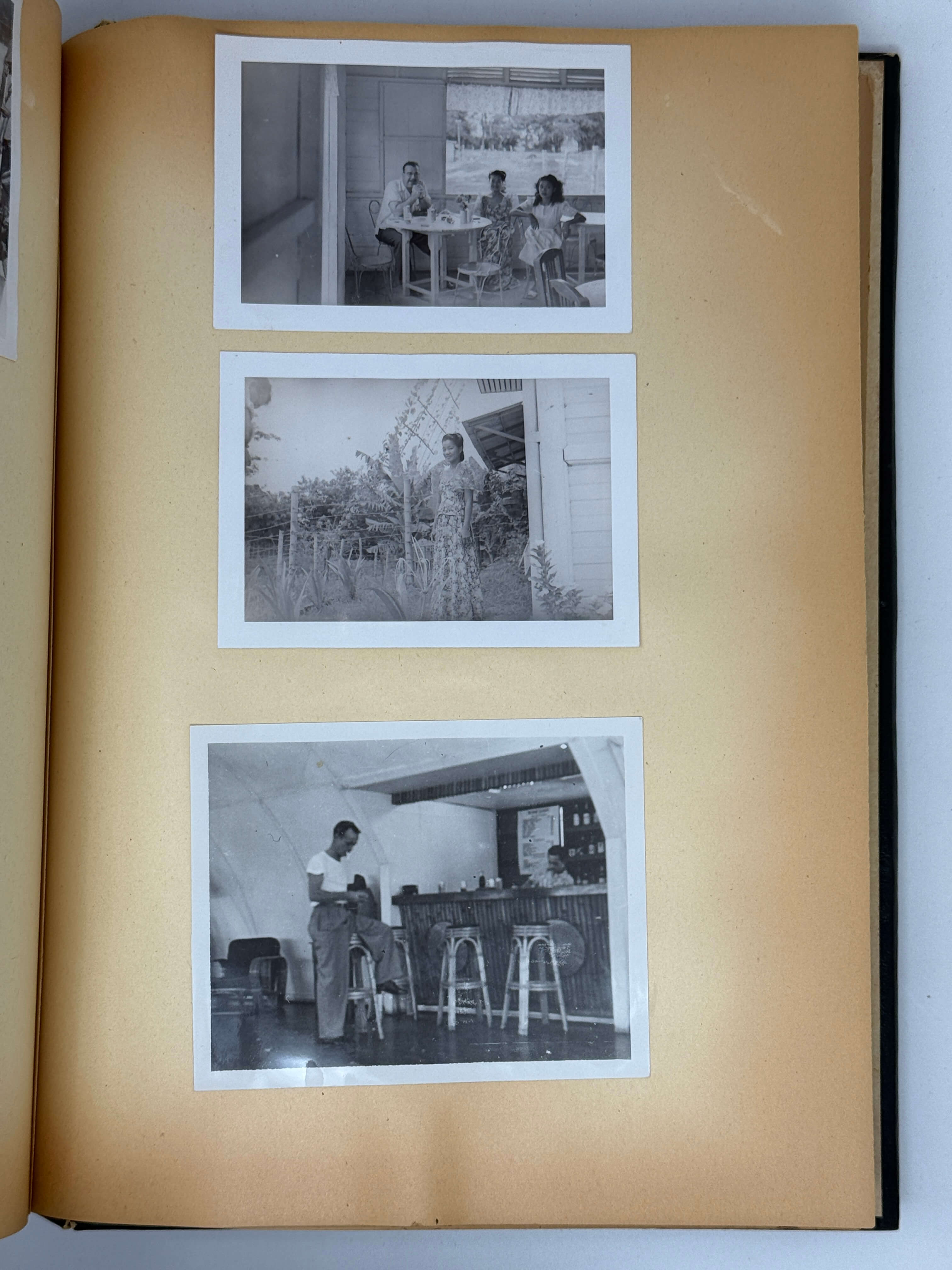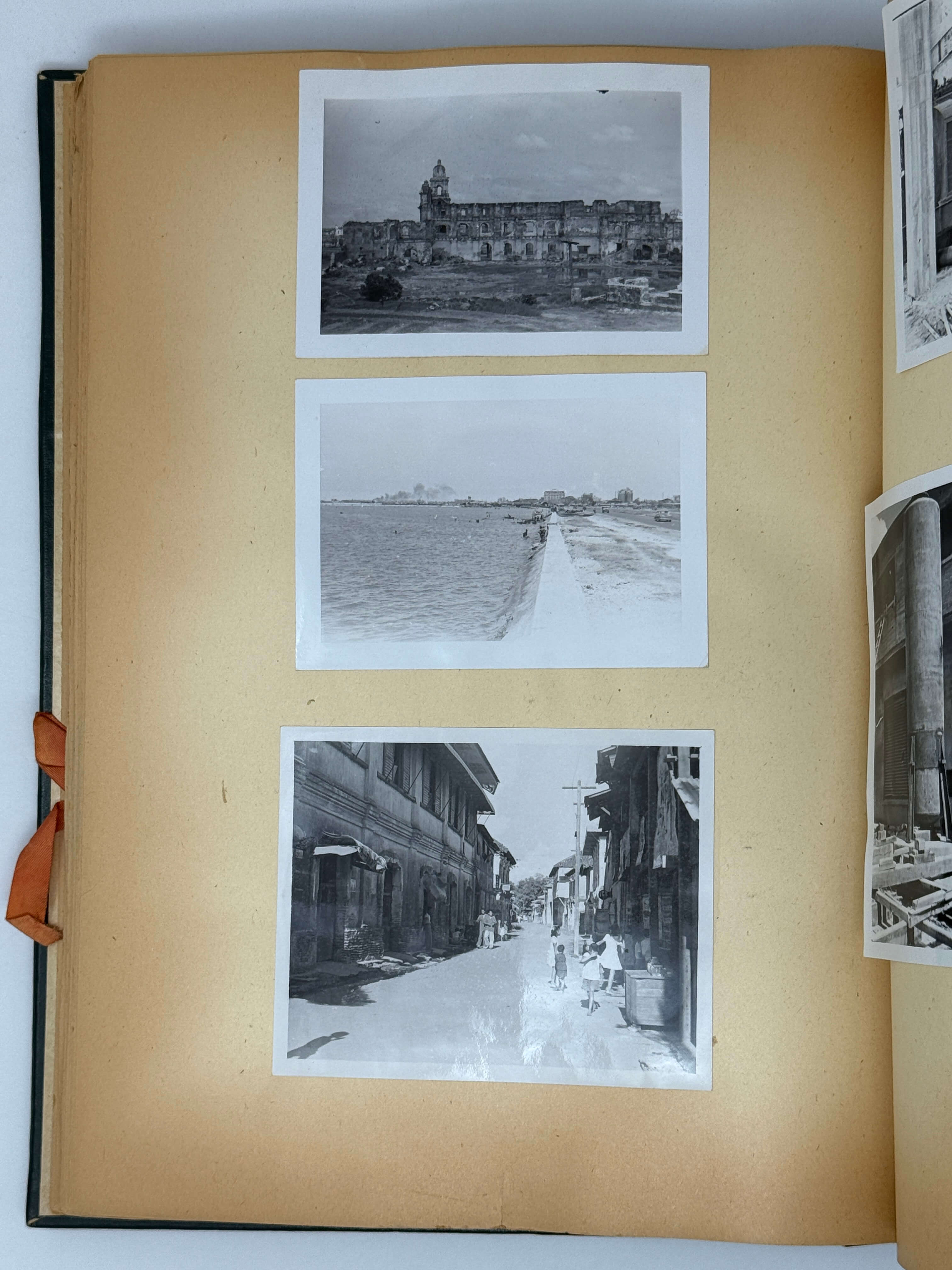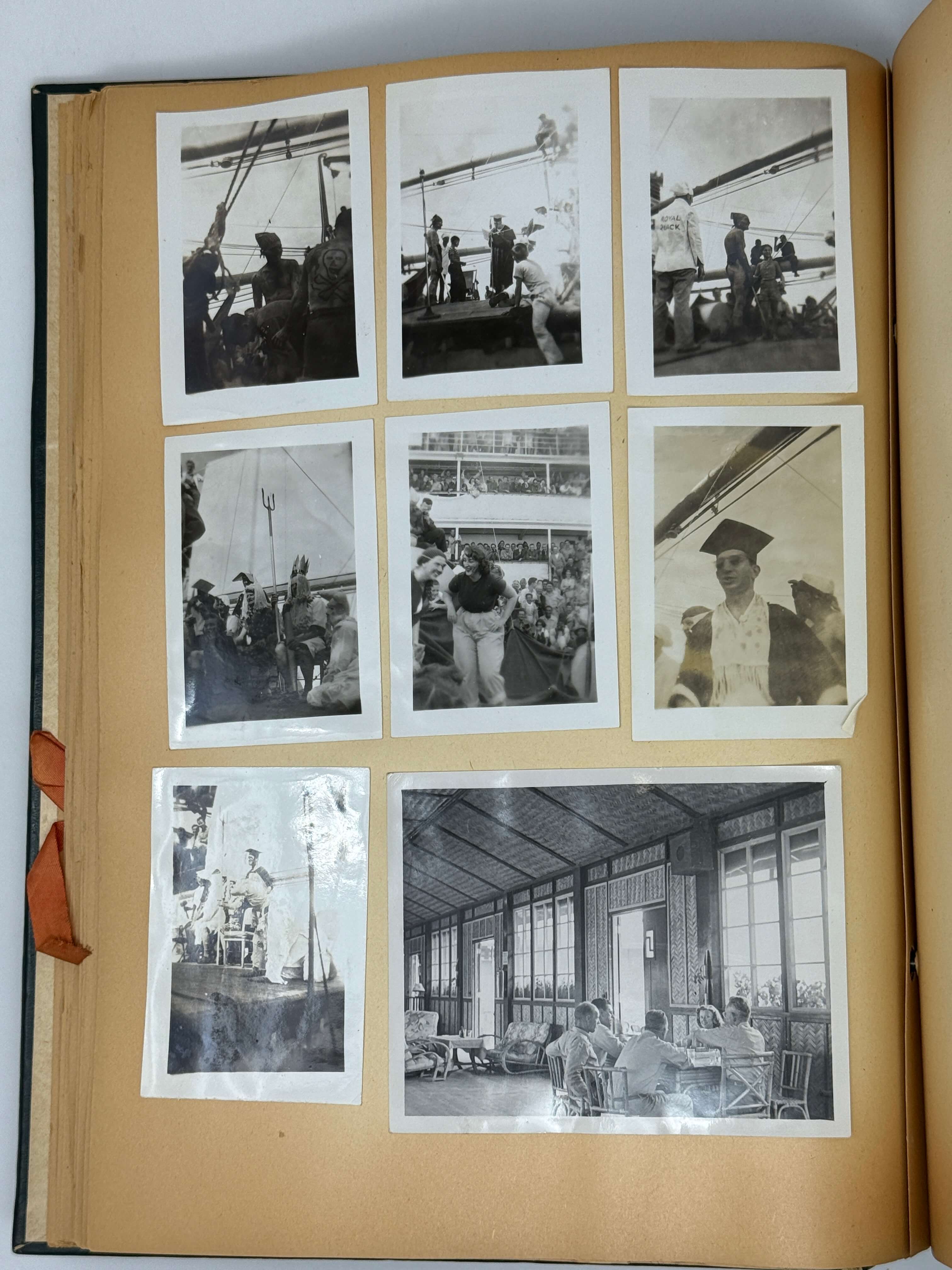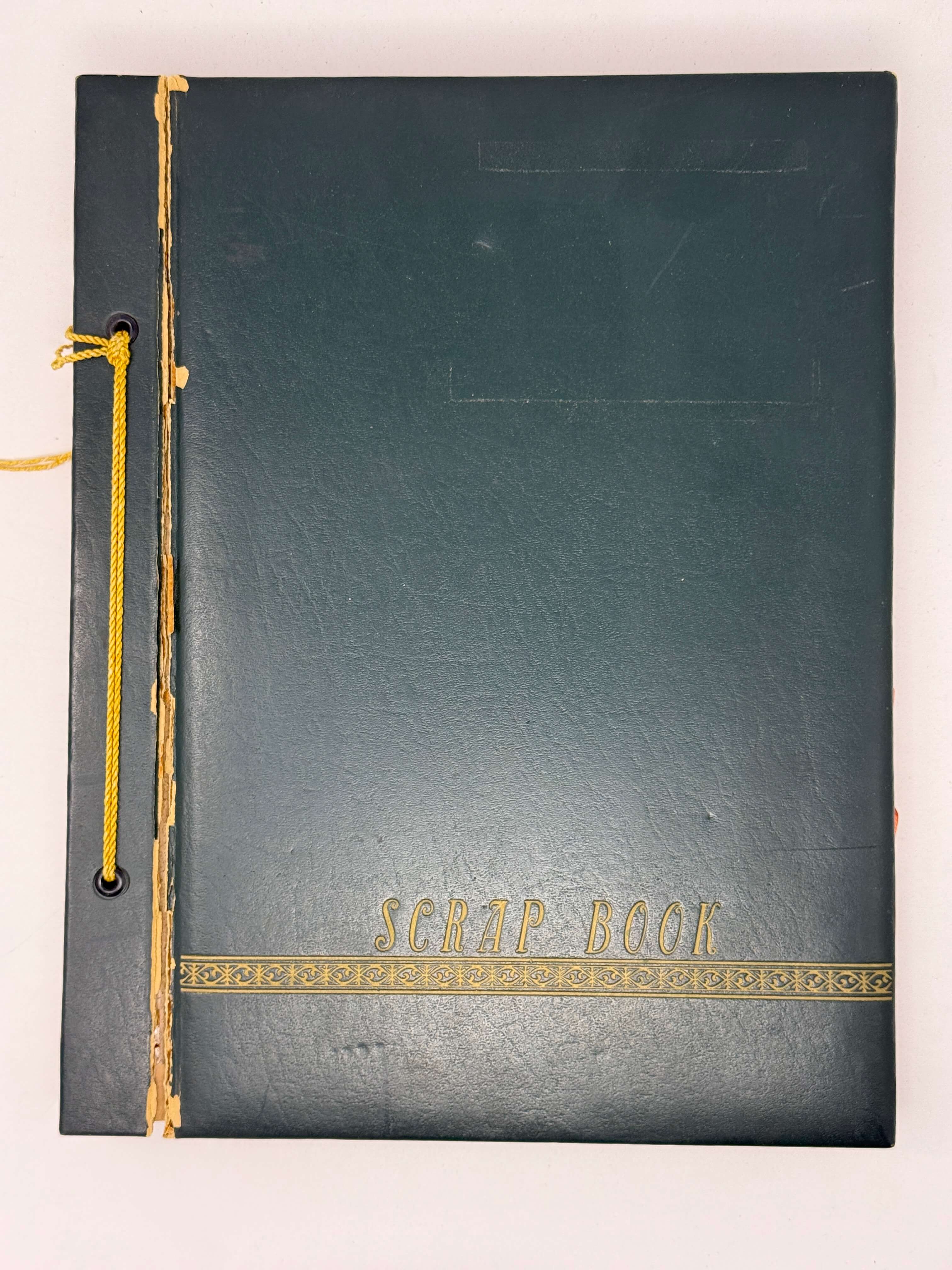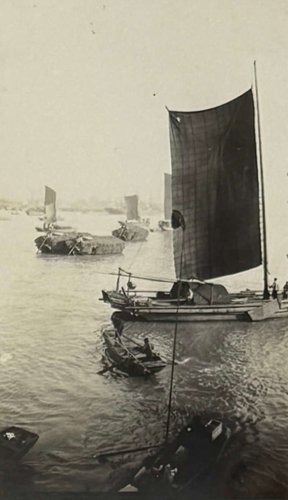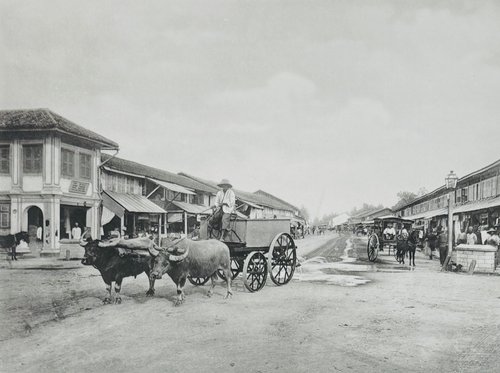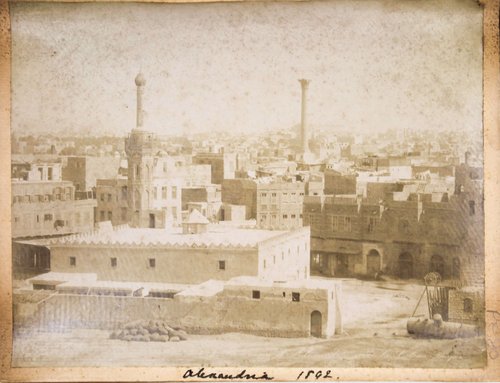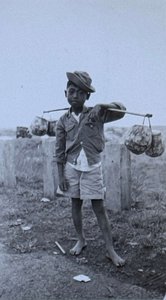
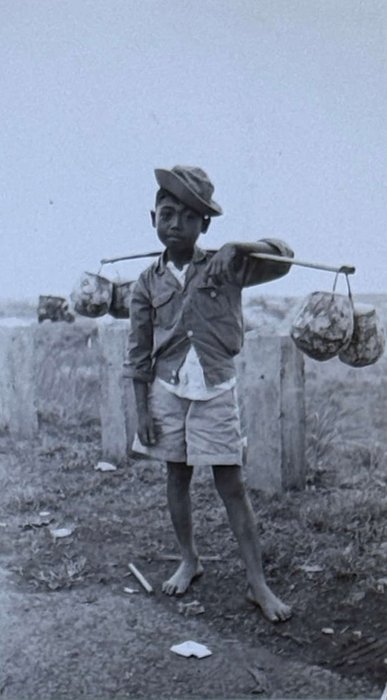
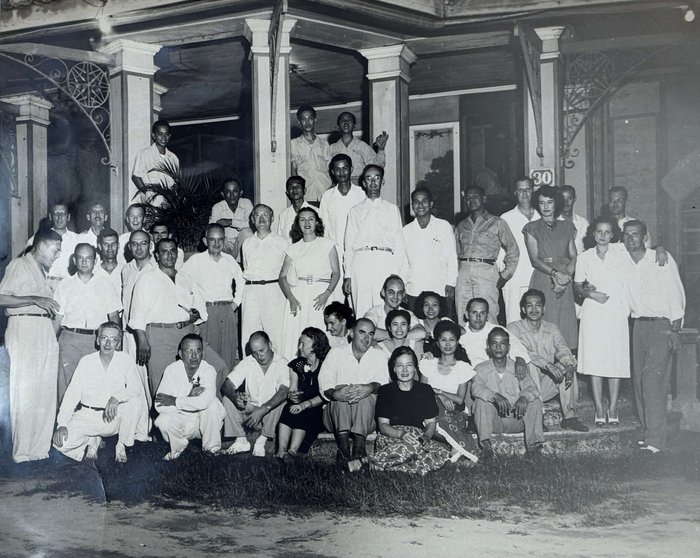
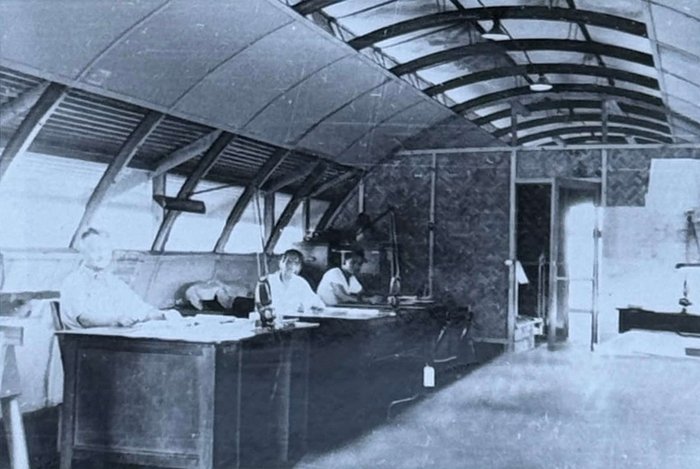
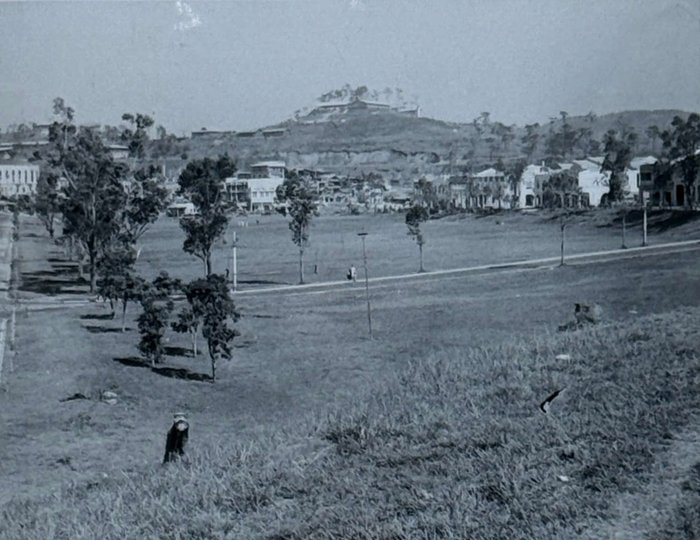
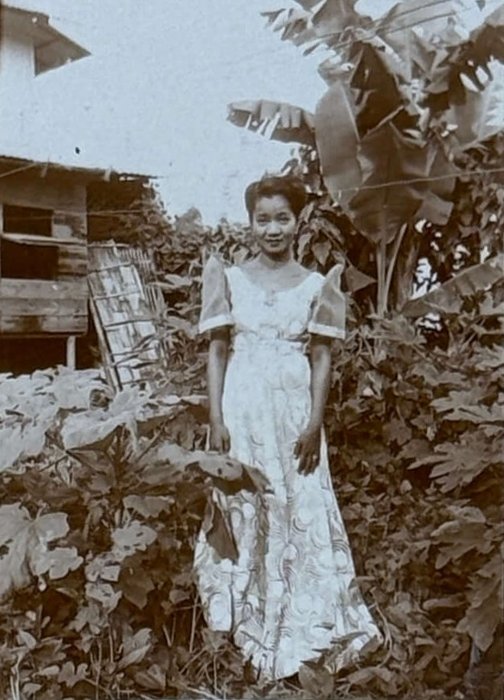

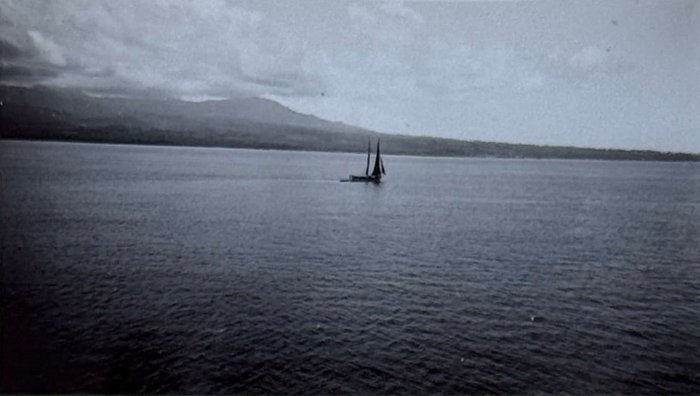
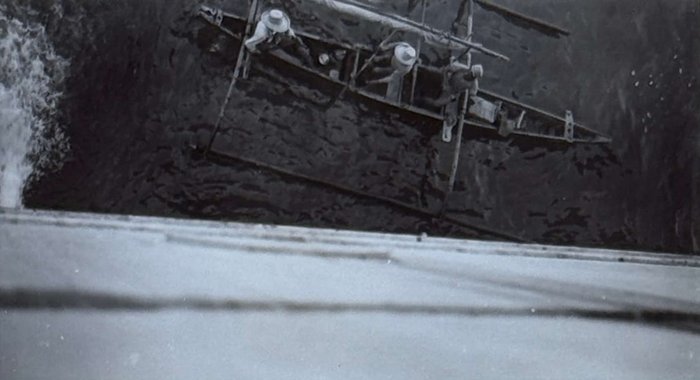
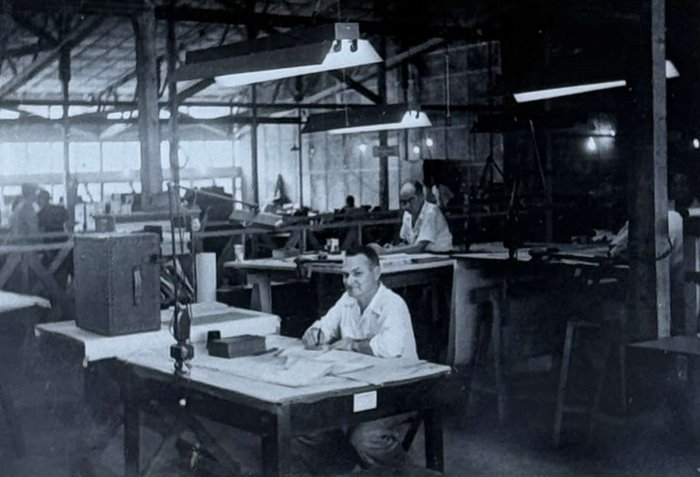

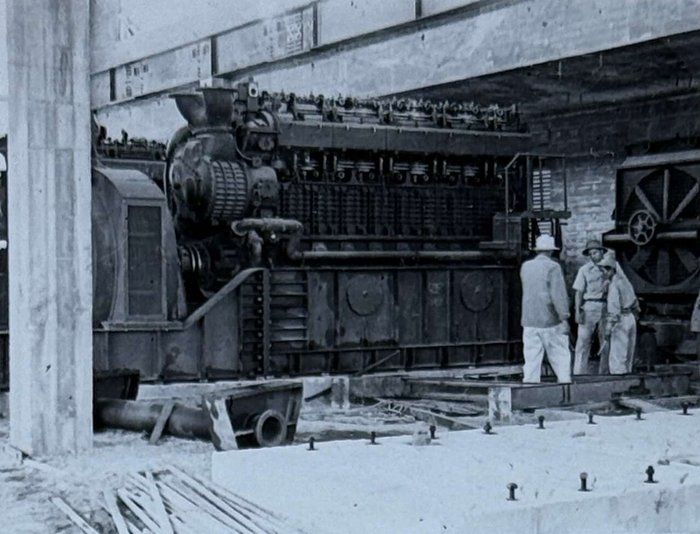
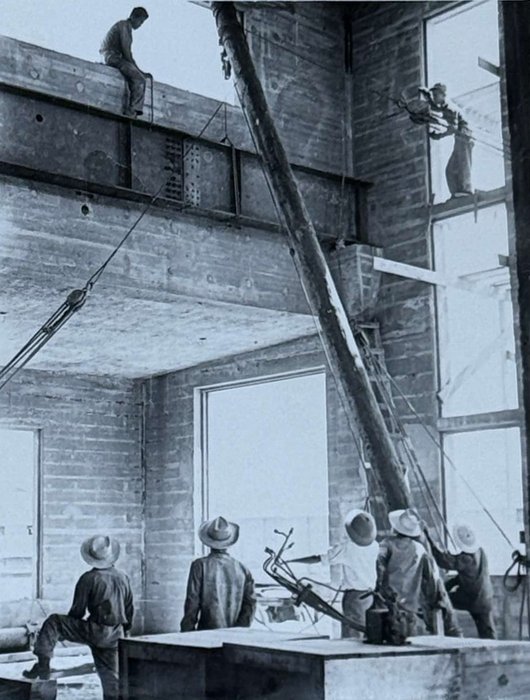
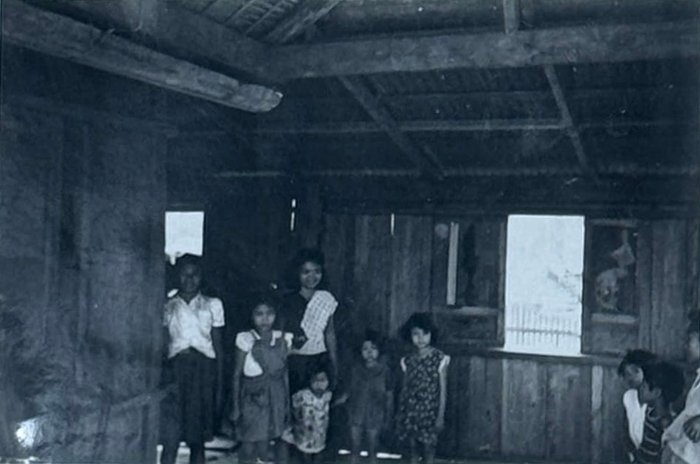
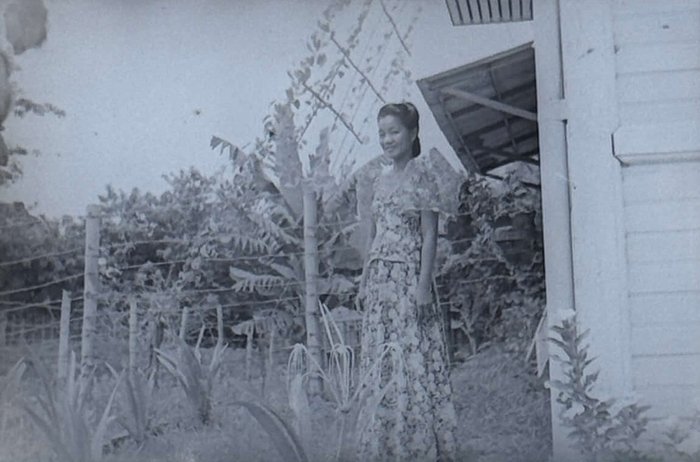


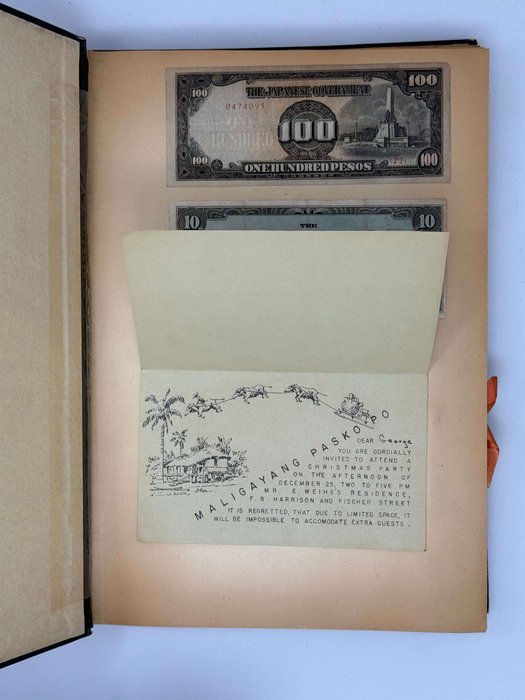
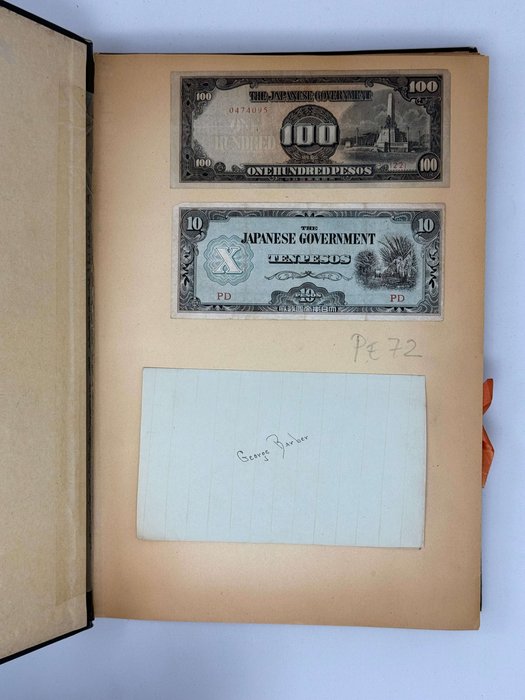
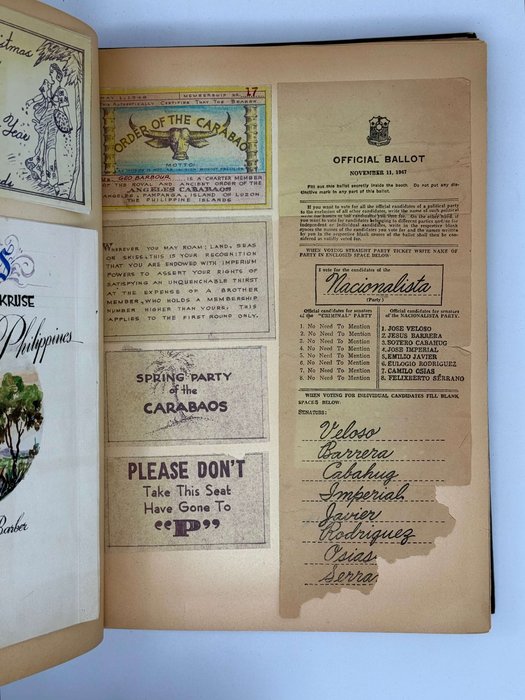

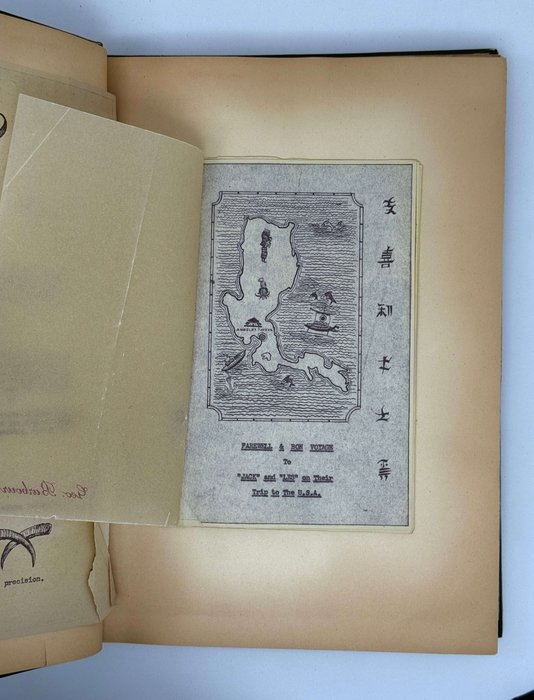
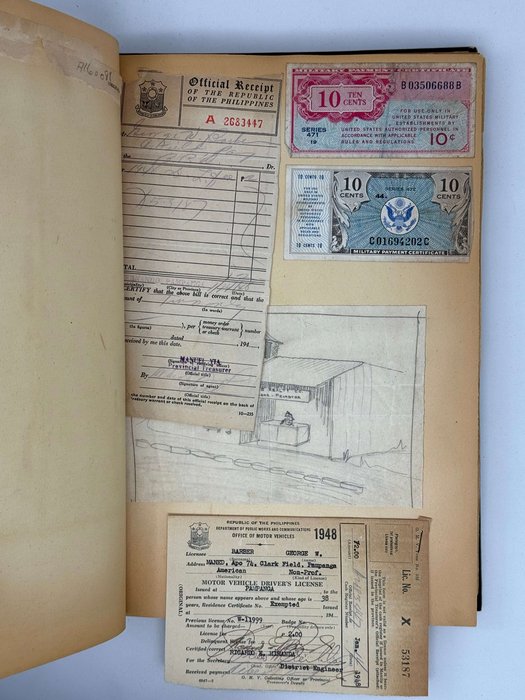
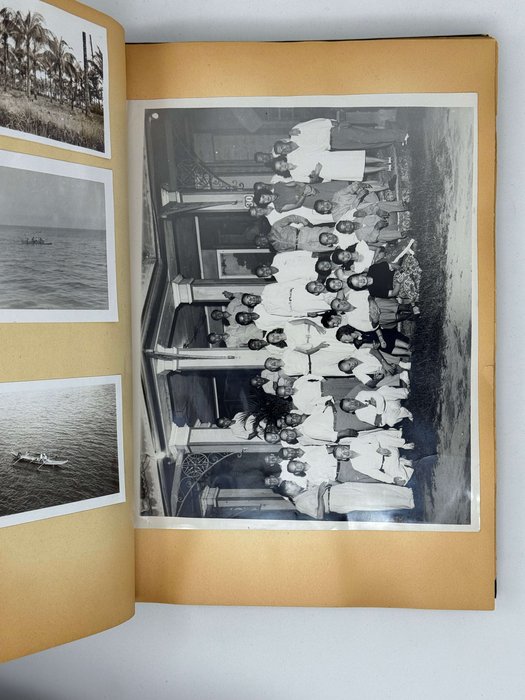
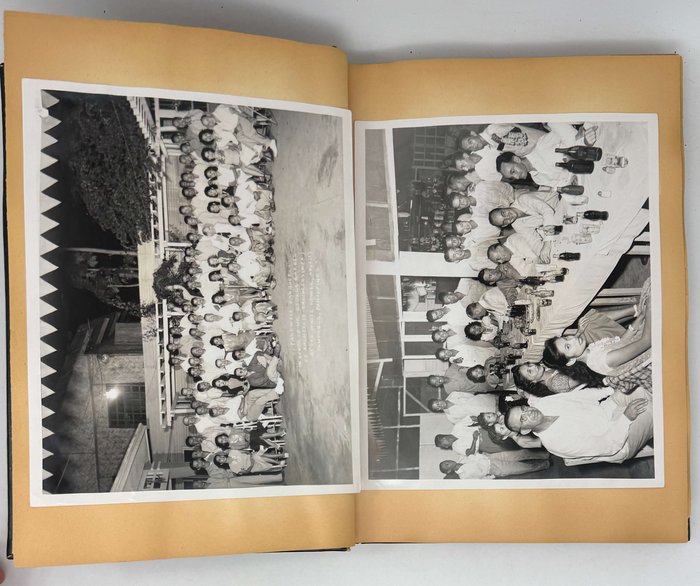
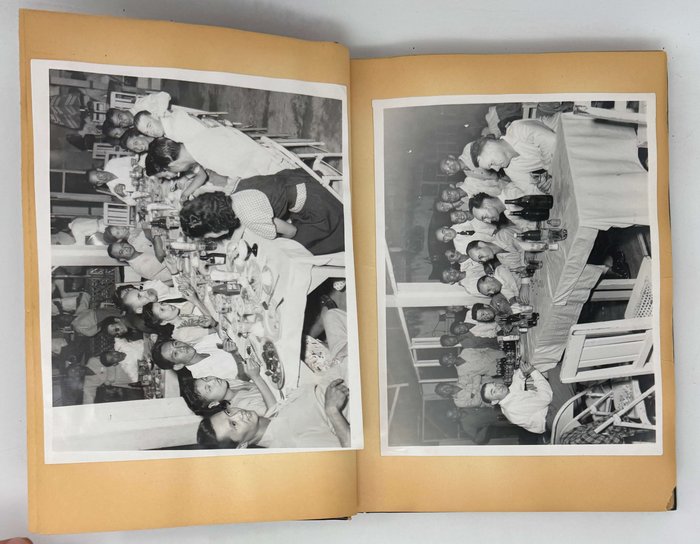
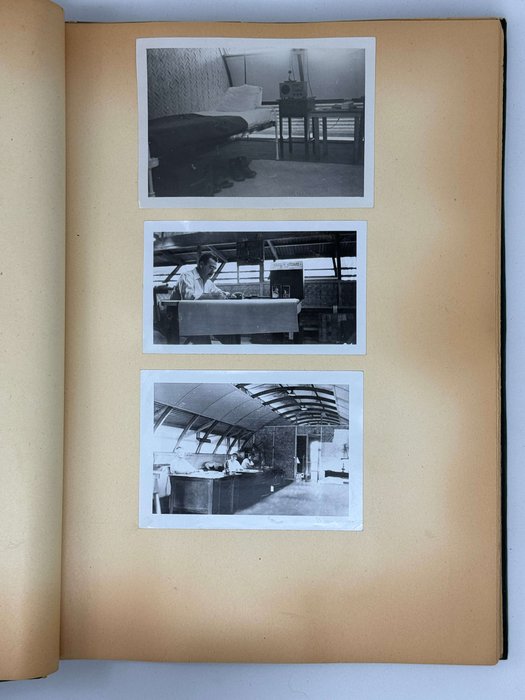
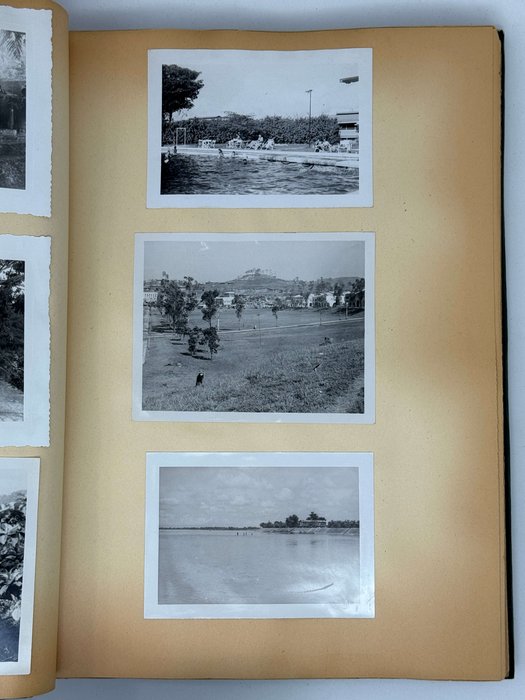
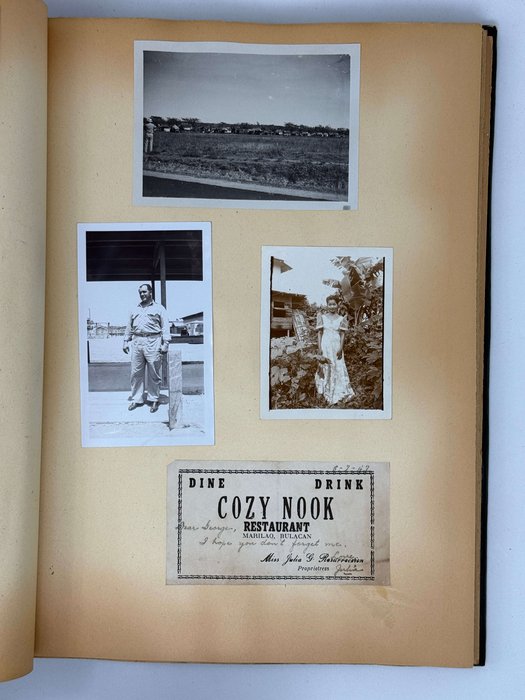

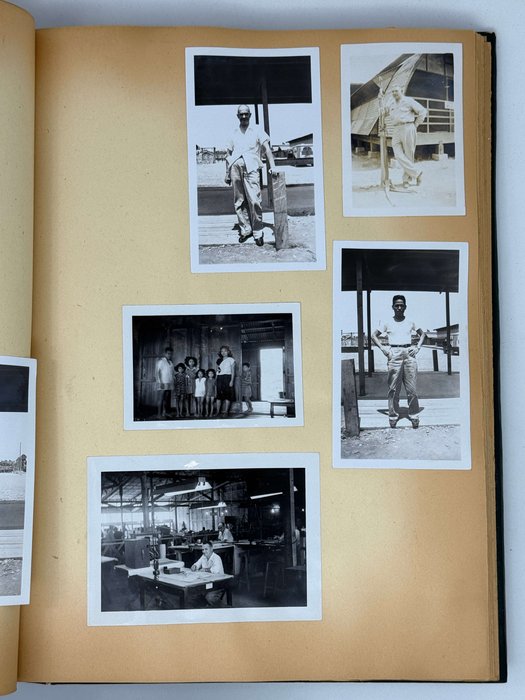

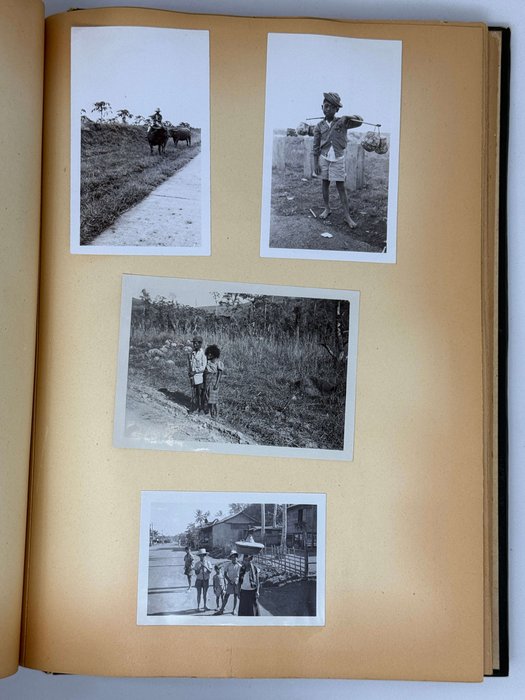
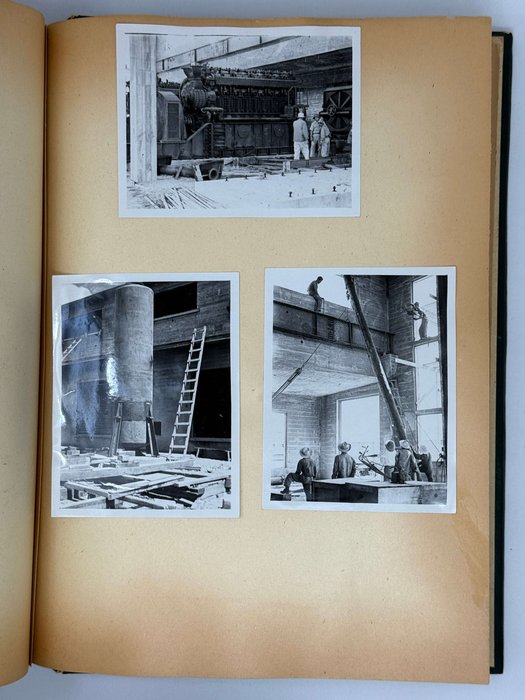
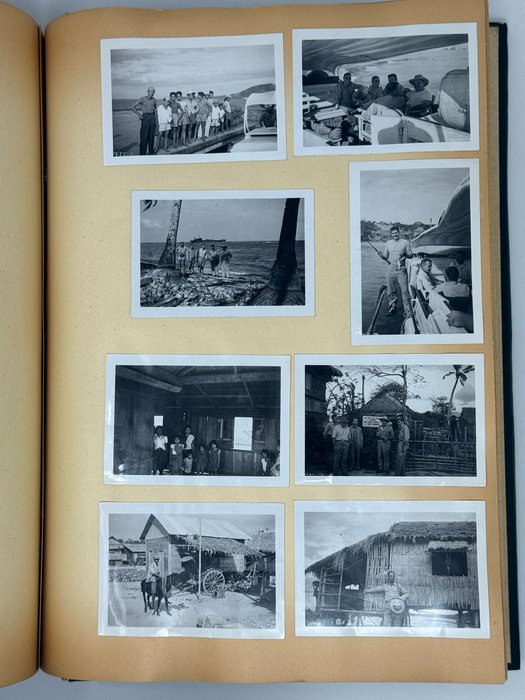
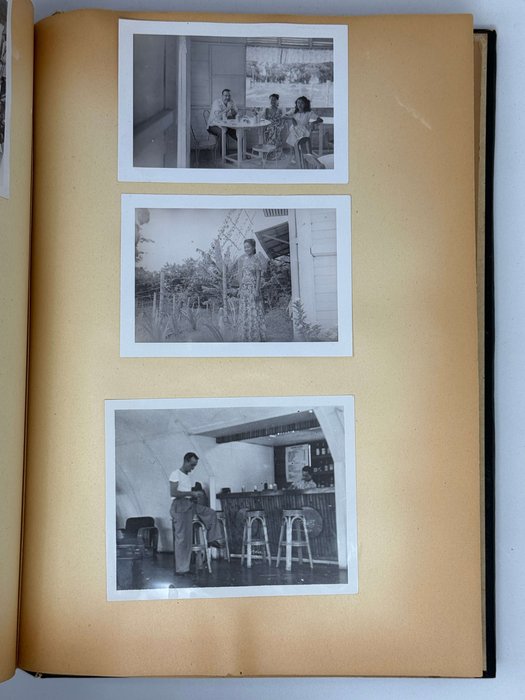
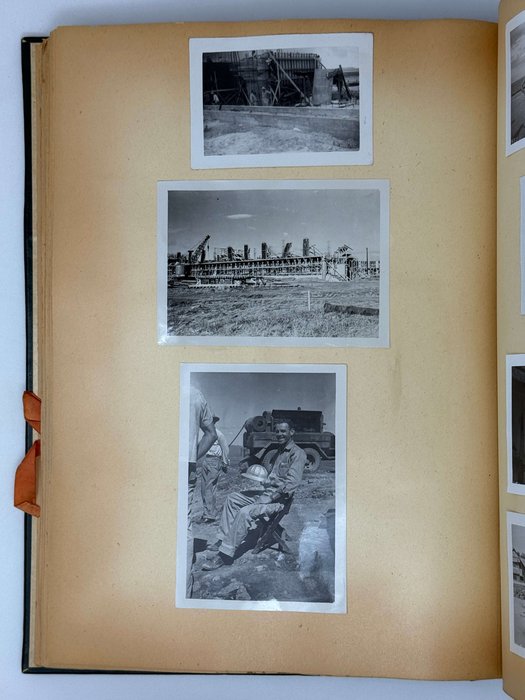
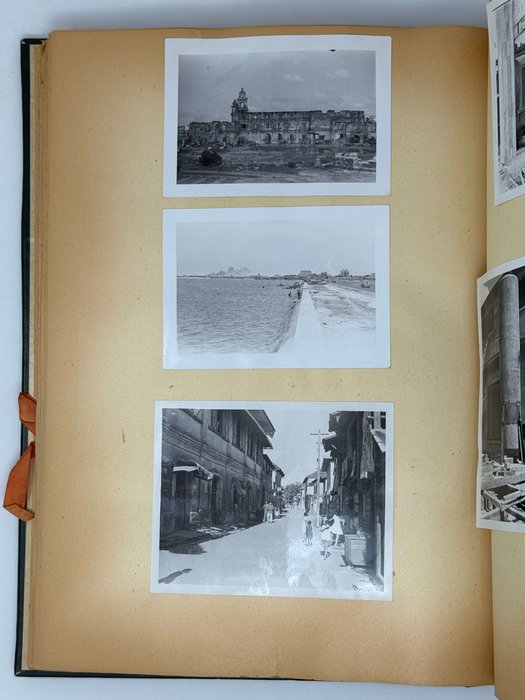
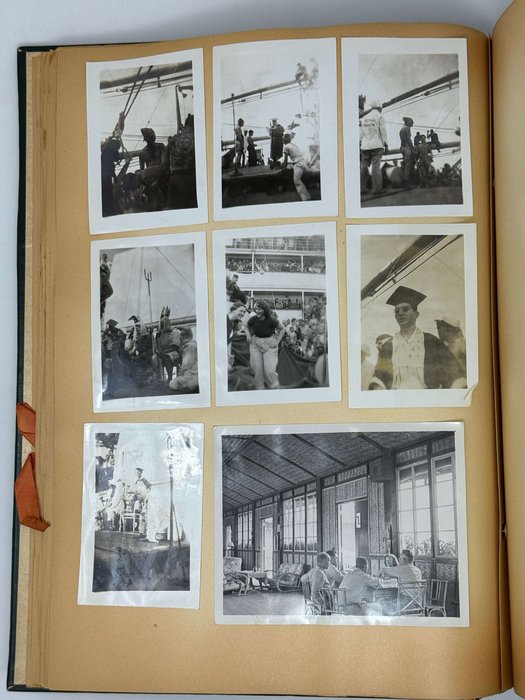
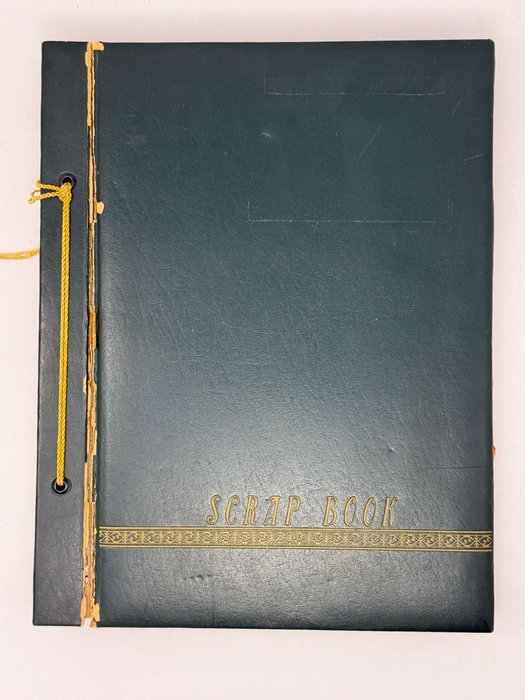
#PE72
Ca. 1948
Folio (ca. 25.5 x 33.5 cm or 10 x 13 in). 39 cardstock leaves (eight blank). 179 mounted gelatin silver photographs, six ca. 25 x 20 cm (9 ¾ x 7 ¾ in), the rest from ca. 13.5 x 9.5 cm (5 ¼ x 3 ¾ in) to 6 x 6 cm (2 ¼ x 2 ¼ in). Five images captioned in negative. Period green cloth album fastened with string with gilt-tooled generic title “Scrap book.” Front cover partially detached from stub and repaired with tape; several mounts slightly waved; a couple of photos mildly faded, but overall a very good album of interesting photos.
A collection of photographs showing the Philippines shortly after World War II. The album was compiled by George Barber, an American architect or engineer employed with the architecture firm Weihe, Frick and Kruse. Weihe, Frick and Kruse was established in 1941 and dissolved in 1964, and based in San Francisco, California. After World War II, the firm was contracted to design troop housing in the Philippines. Barber was likely part of these efforts and lived at Clark Air Base during this time. Clark Air Base, built in 1903, was an American air base until 1991. It was a key base during World War II and the Vietnam War. After 1991, the base was given to the Philippines and now operates as Clark International Airport.
Over 25 photographs are related to Weihe, Frick and Kruse. A large group photo shows the architects and engineers working for the firm at Clark Air Base. Several photographs show employees working at their desks and at construction sites. There are also photographs showing structures at Clark Air Base and the Ayala Bridge Post Exchange. Several photographs are views of the destruction of Manila, including the ruins of the Manila Post Office and the Legislative Building, and buildings reading “Terminal Building” and “UST Restaurant.”
Over 25 photographs are snapshots of street scenes and portraits of Filipinos. Of note are two photographs showing a parade and several scenes of rural life, including people riding an oxen-drawn cart.
Other photographs in the album show the compiler’s journey across the Pacific and the docking of the ship he took, where a gangway reads “52nd Trans. Med Port – Transportation Services Philippines.” They also show snapshots of the compiler and his friends at leisure.
There are also several pieces of ephemera in the album originating from the Philippines. They include the compiler’s Philippine driver’s license, a list of Filipino employees of Weihe, Frick and Kruse, and mementos from and invitations to parties.
Overall, an interesting collection of photographs showing reconstruction efforts in the Philippines after World War II.

